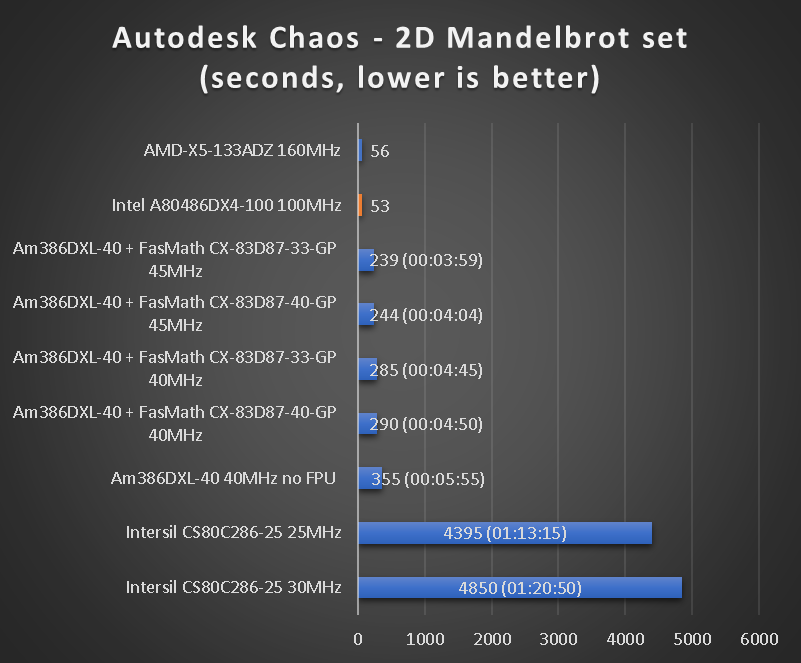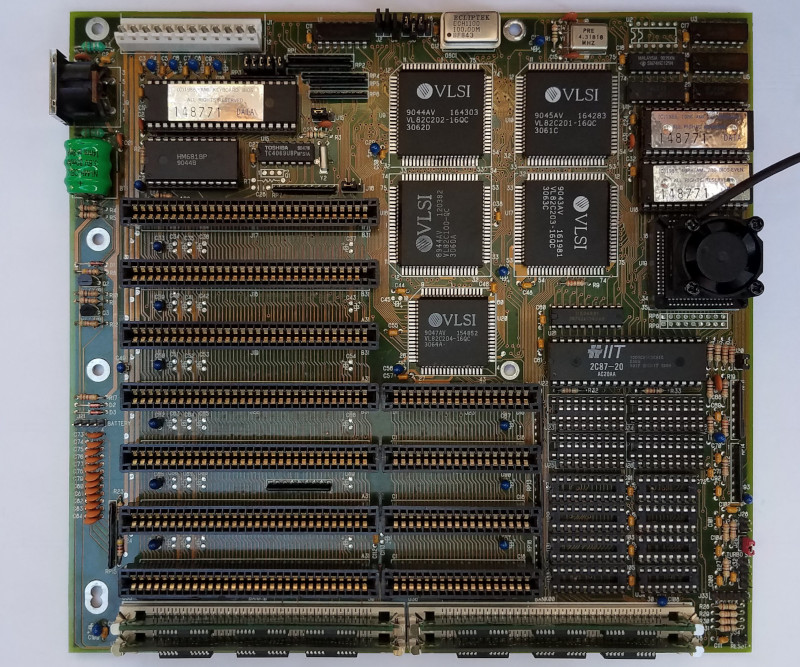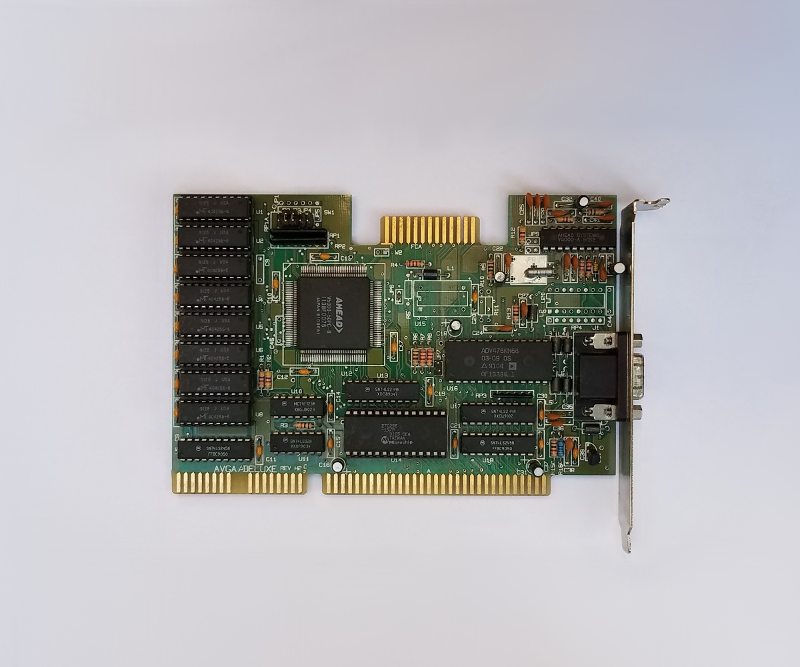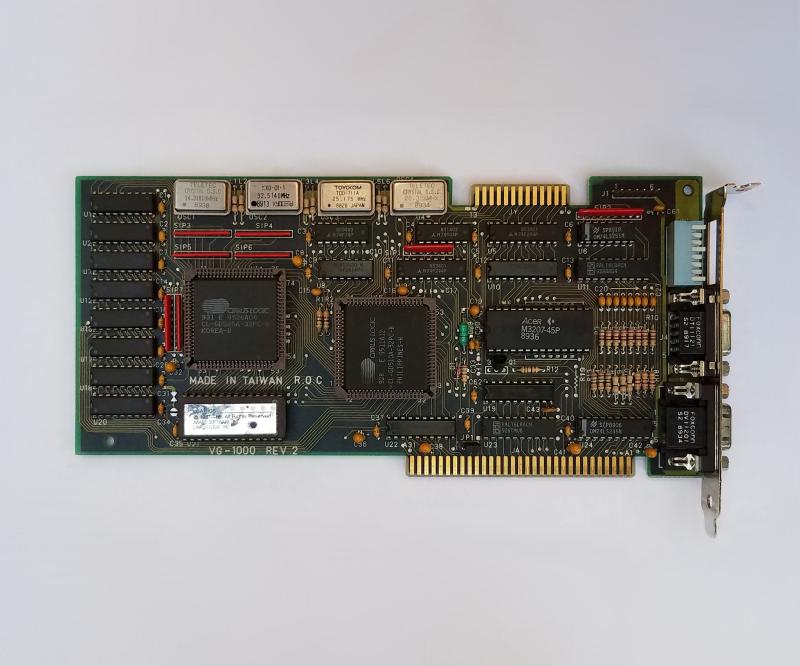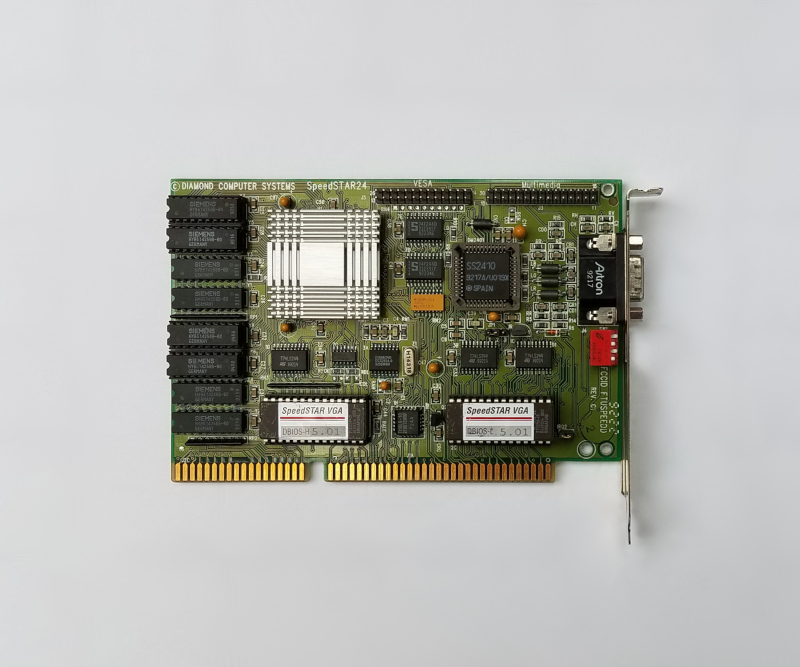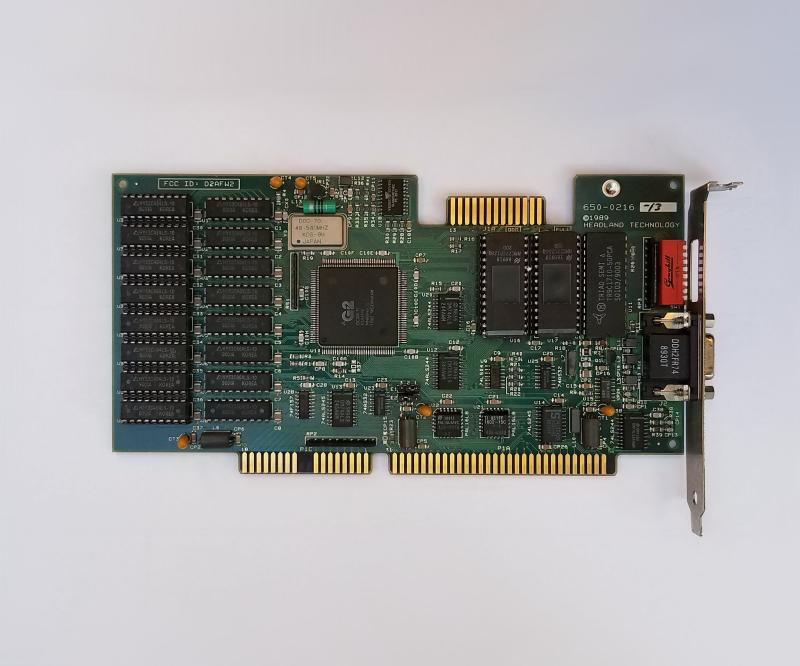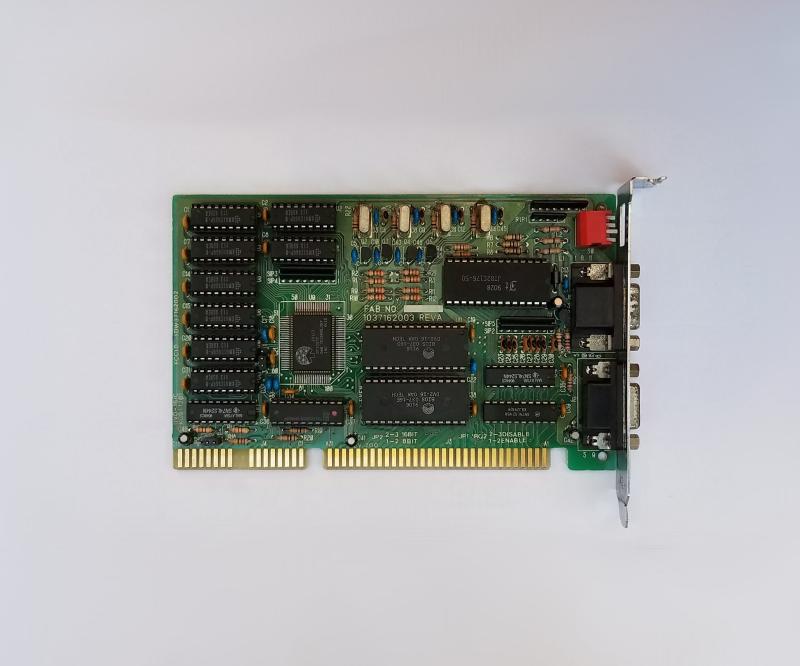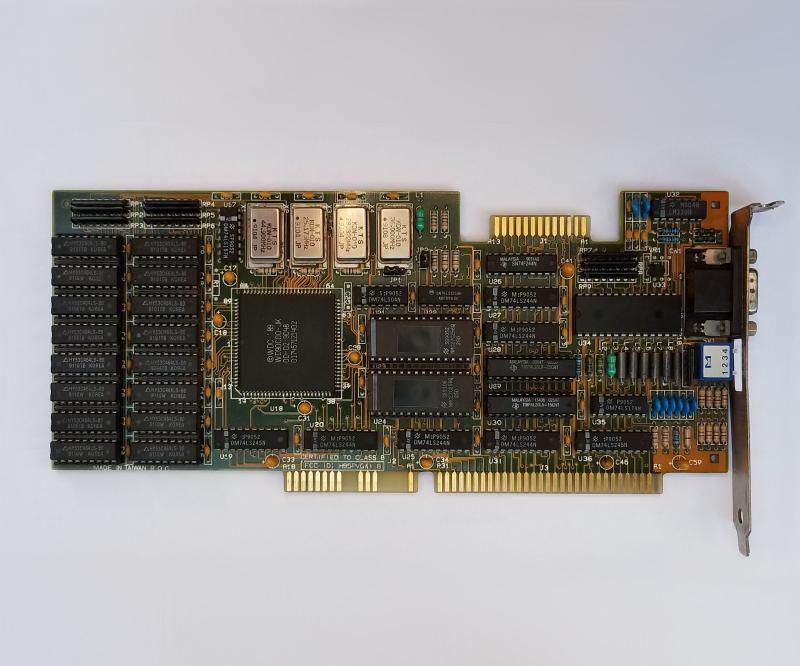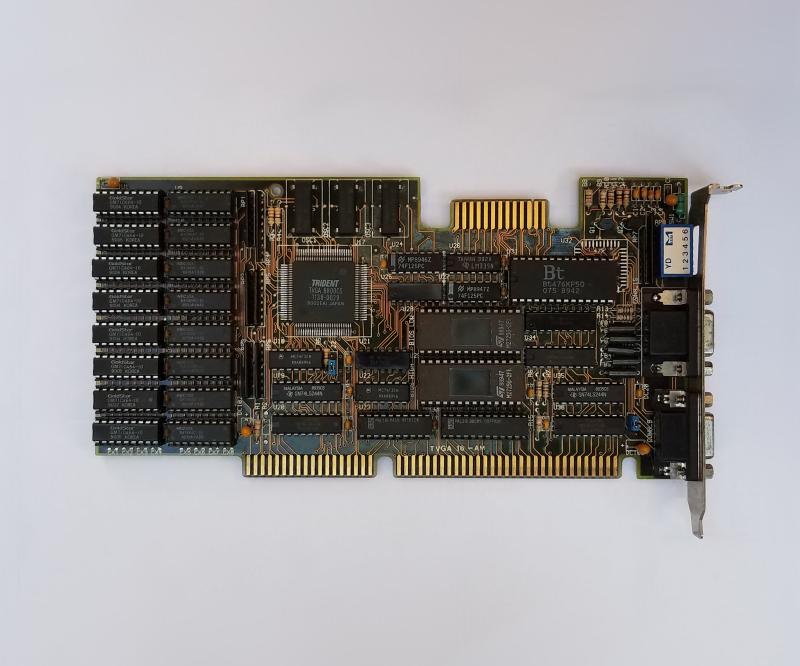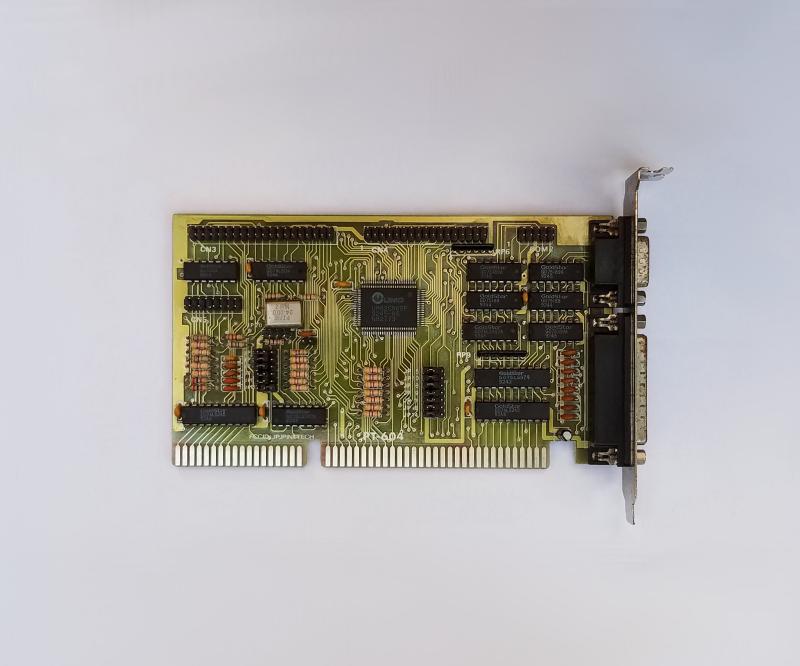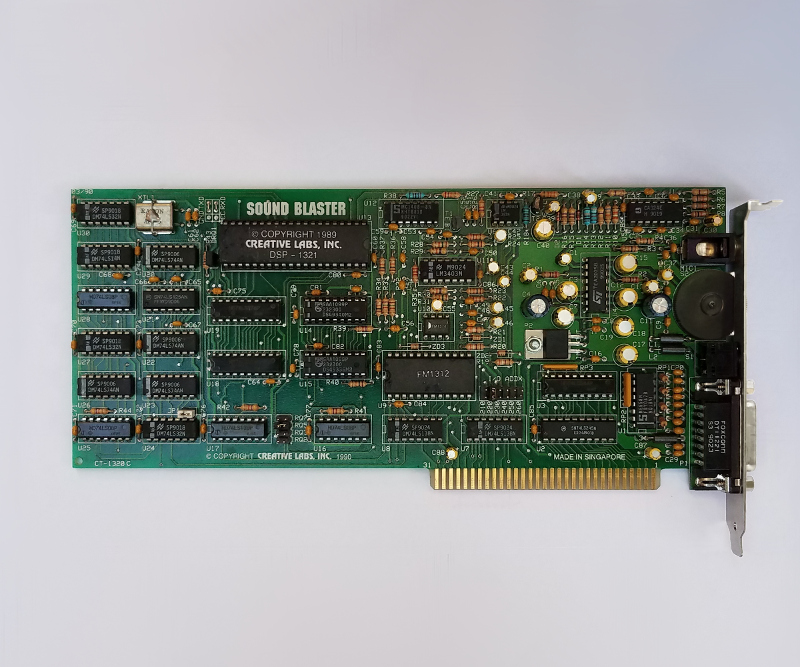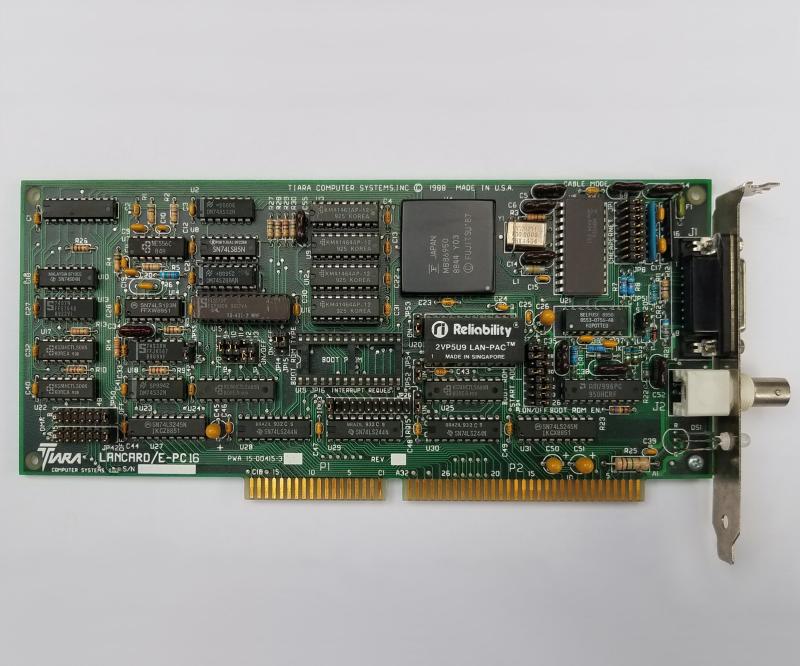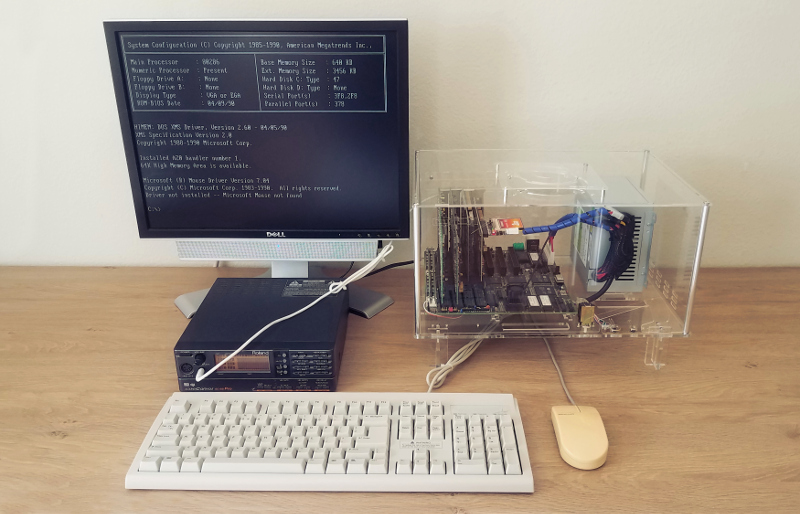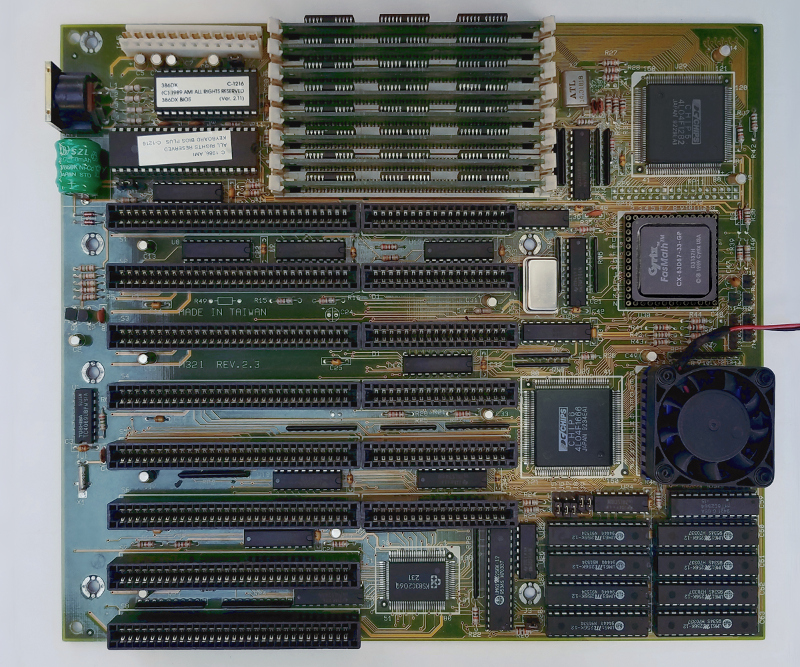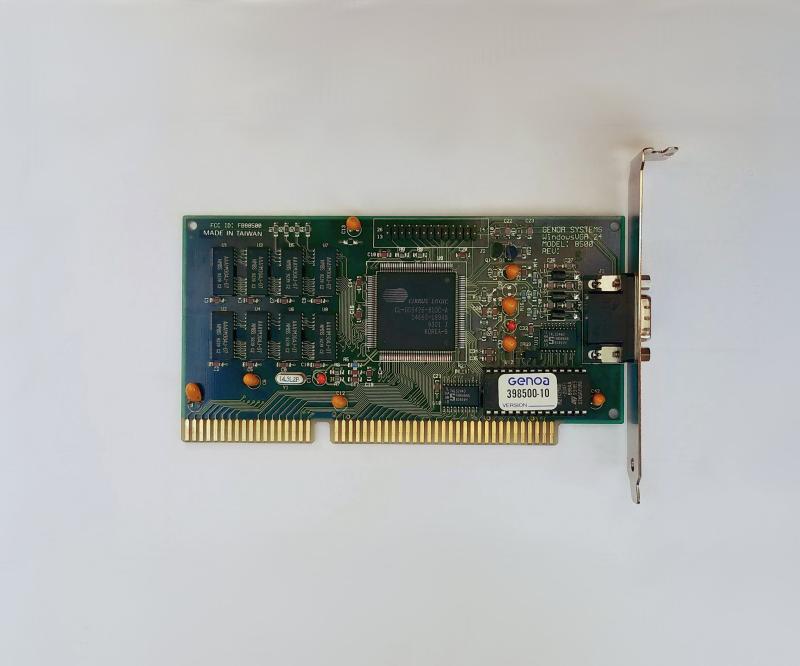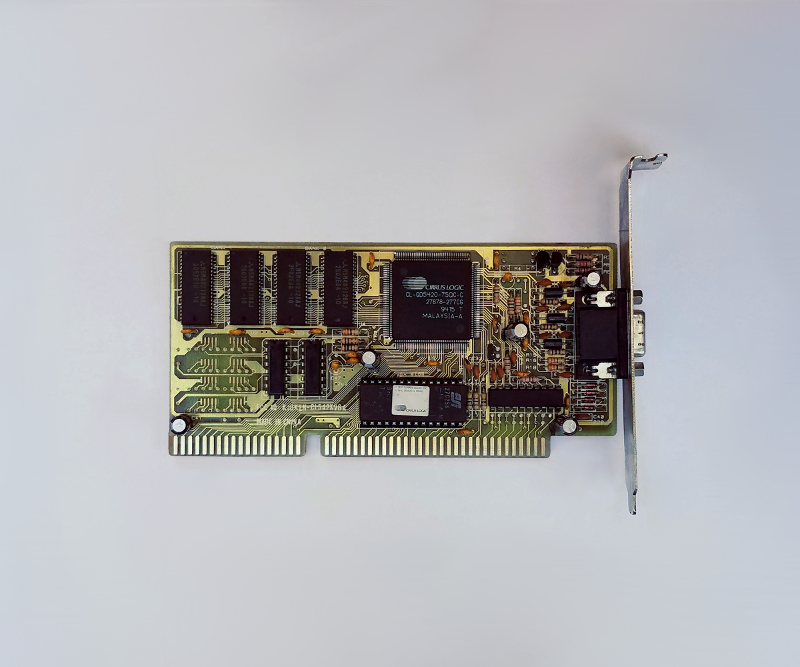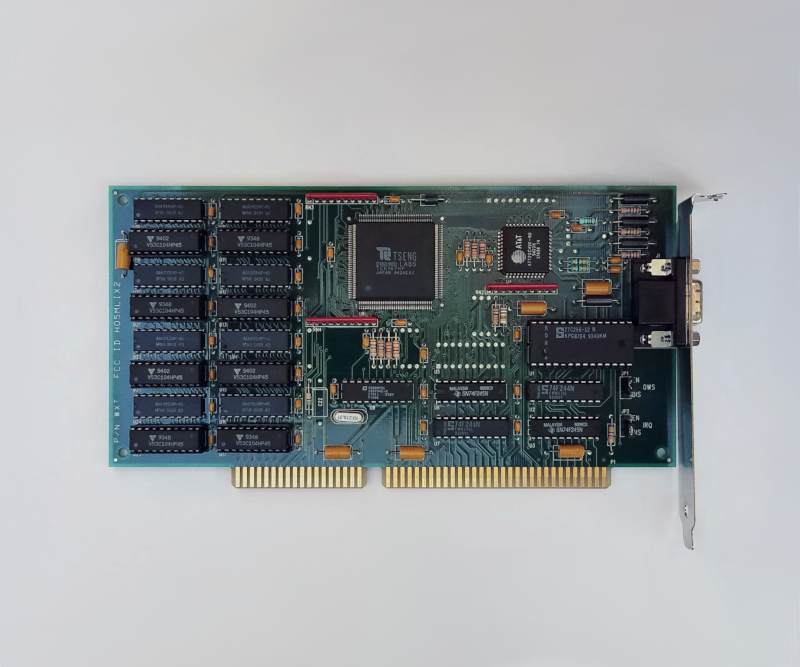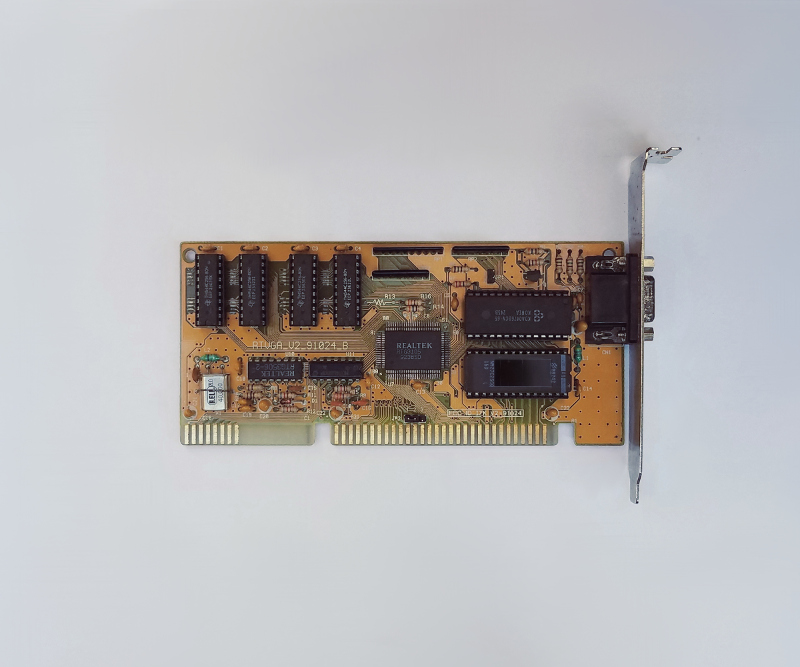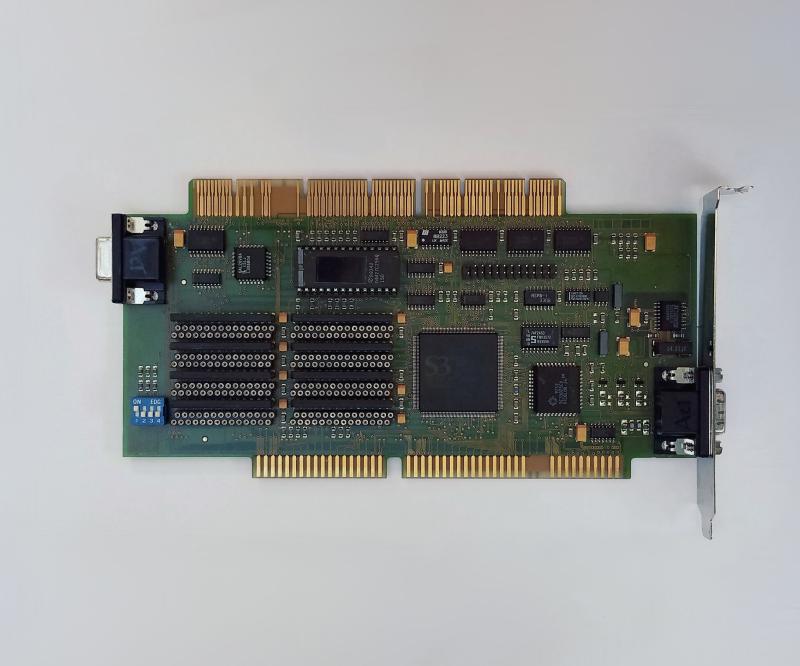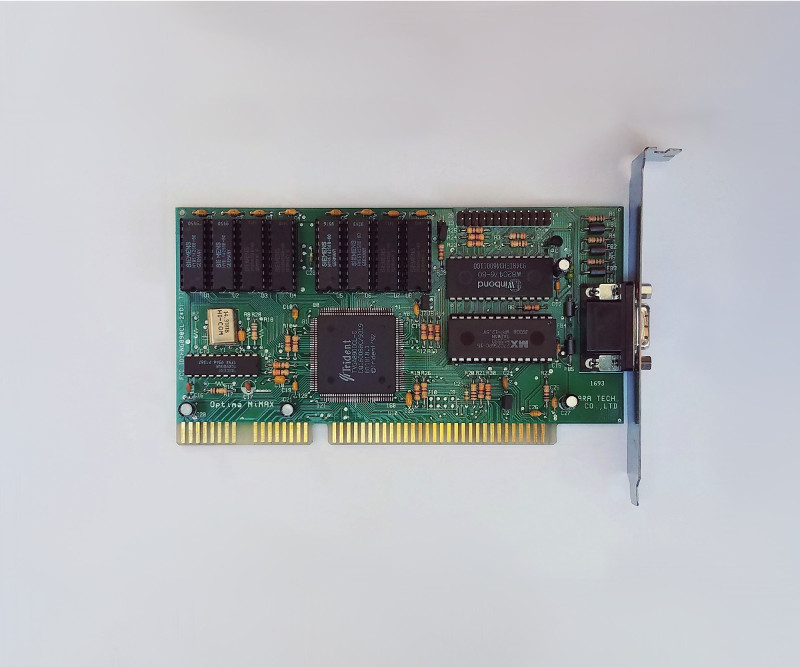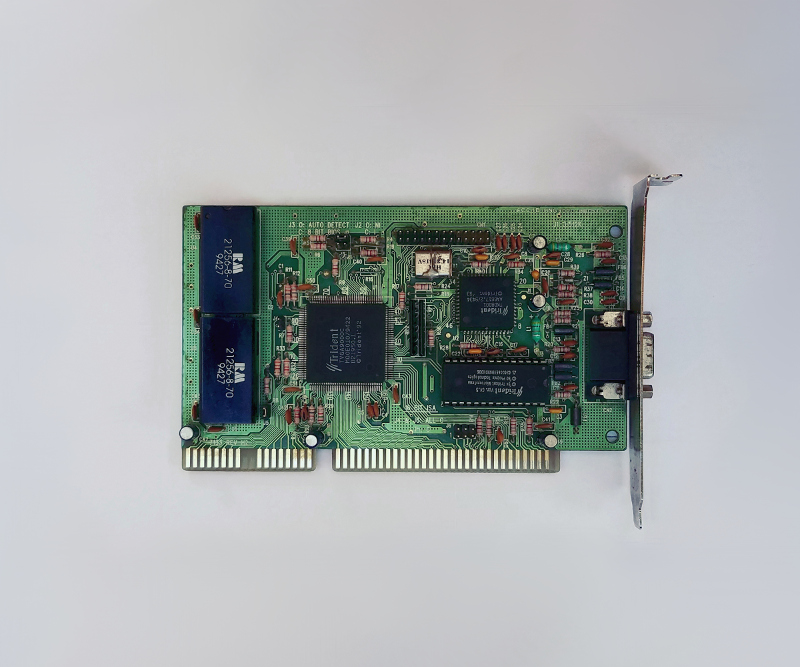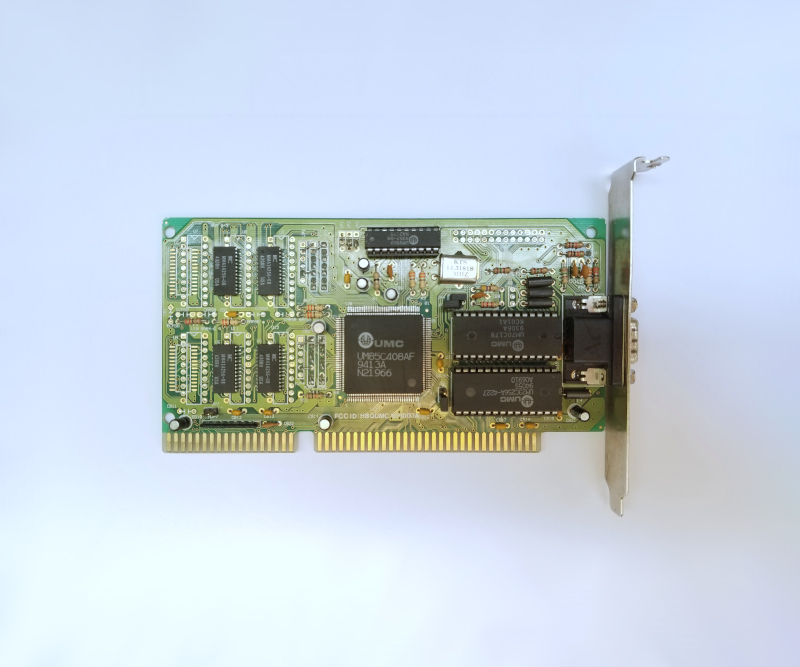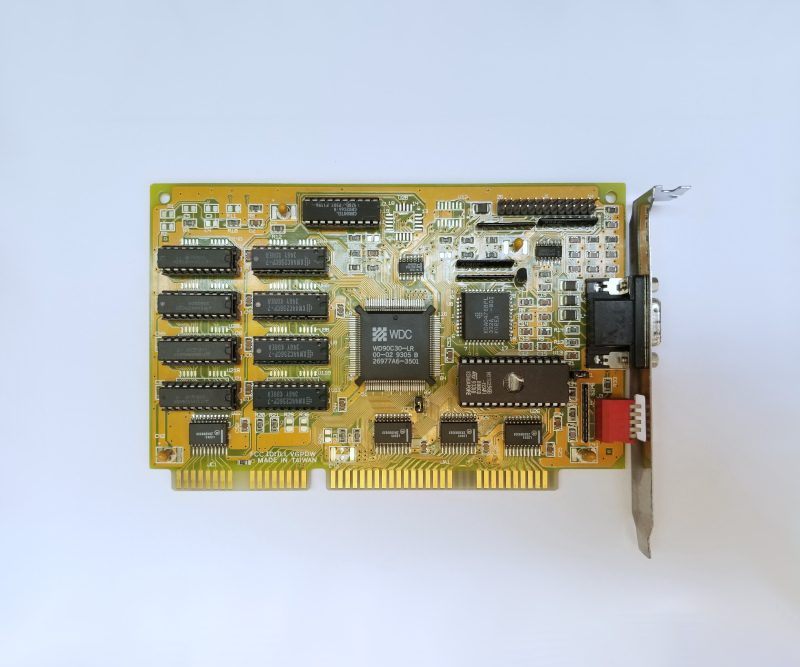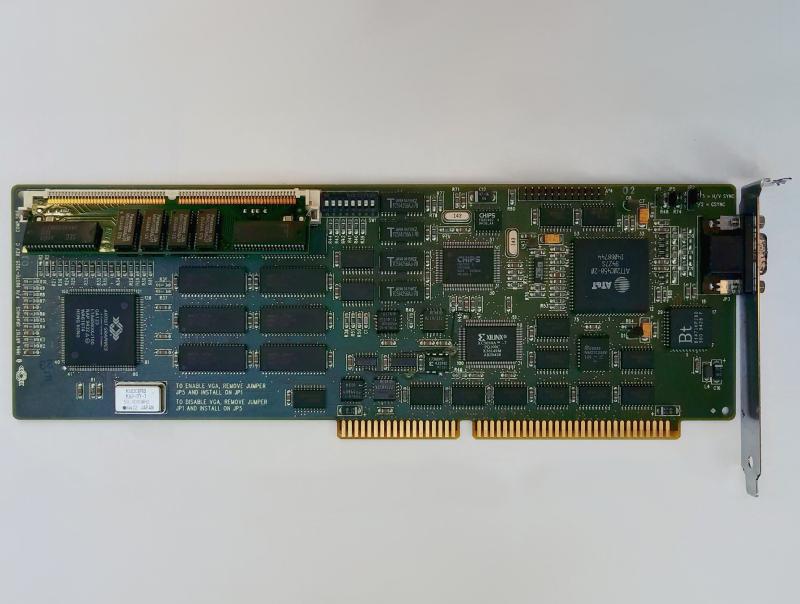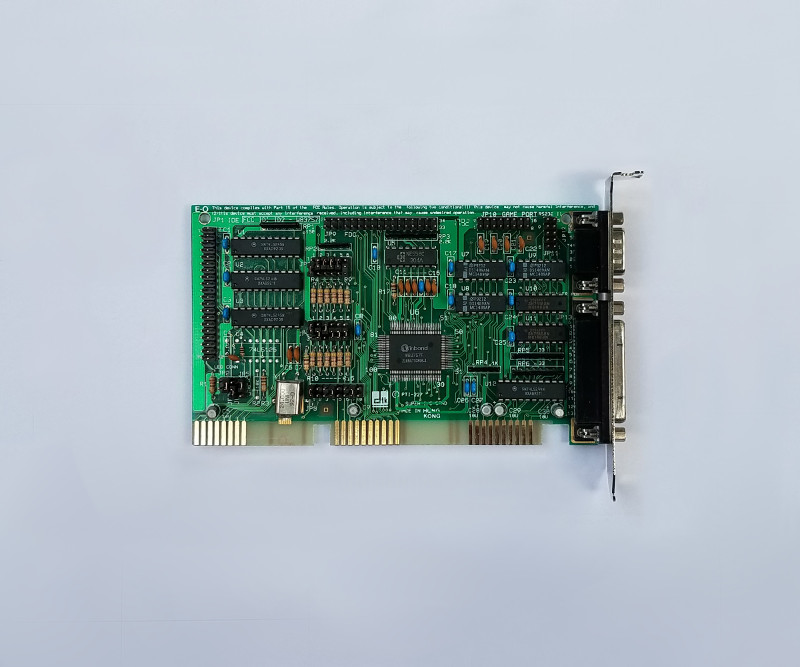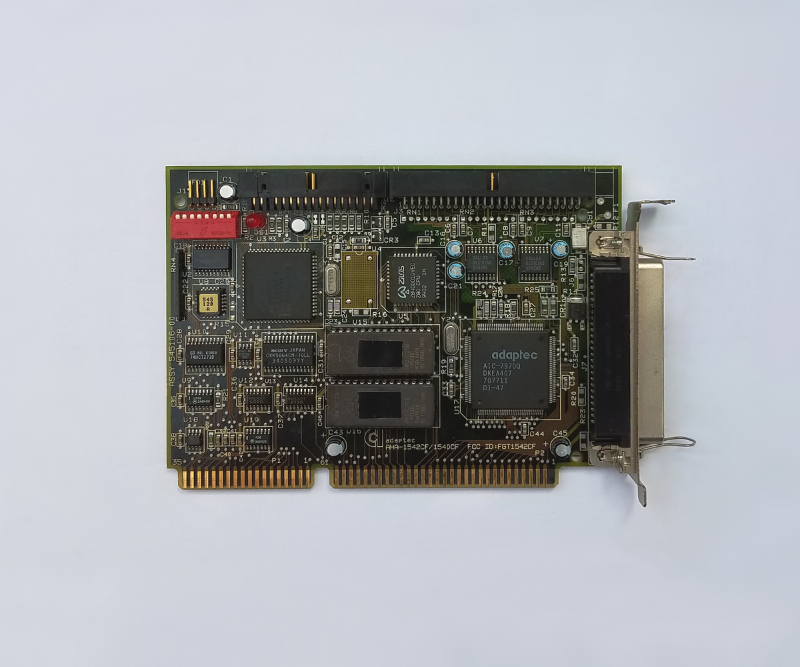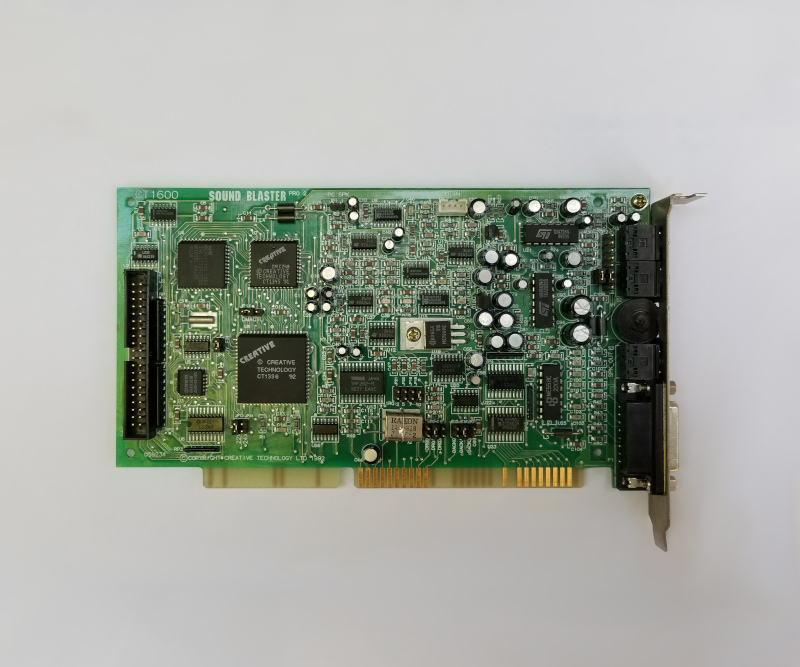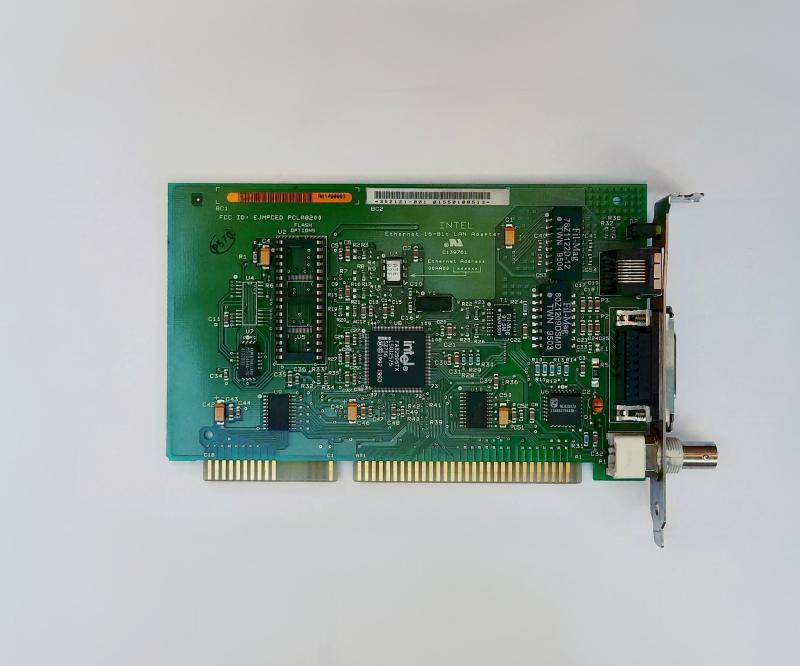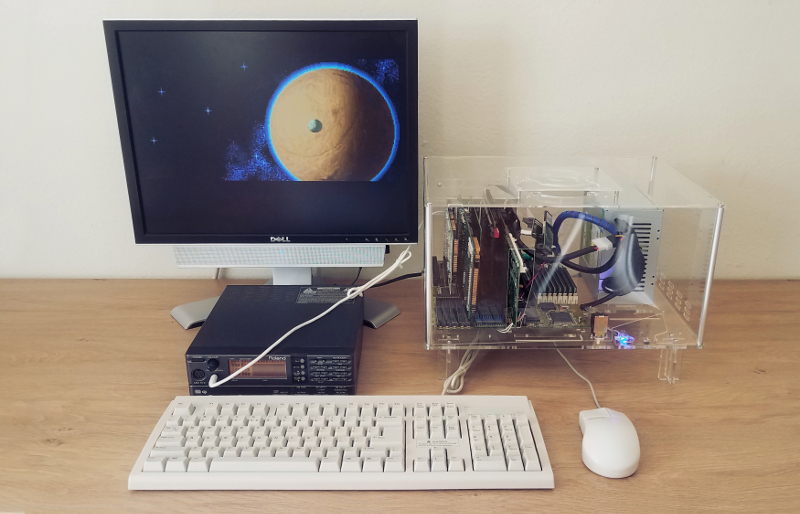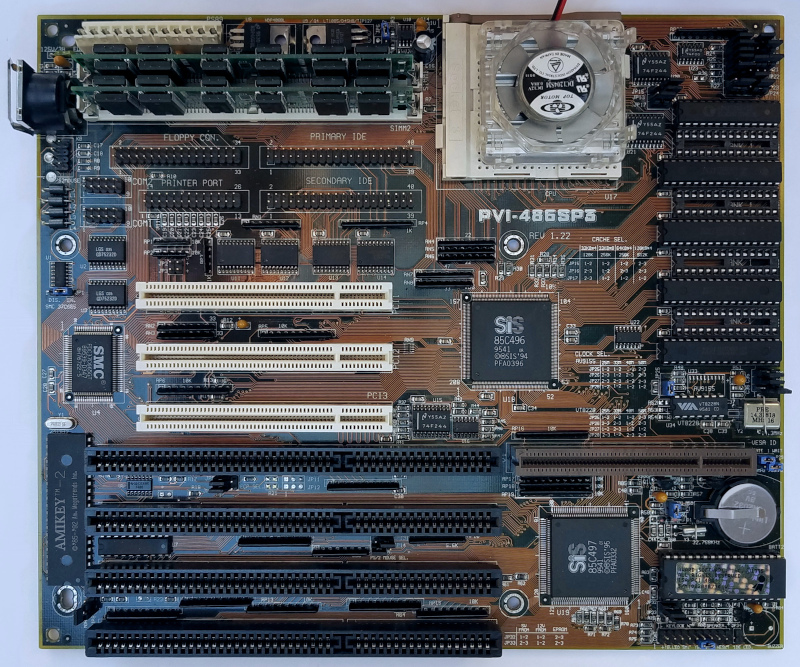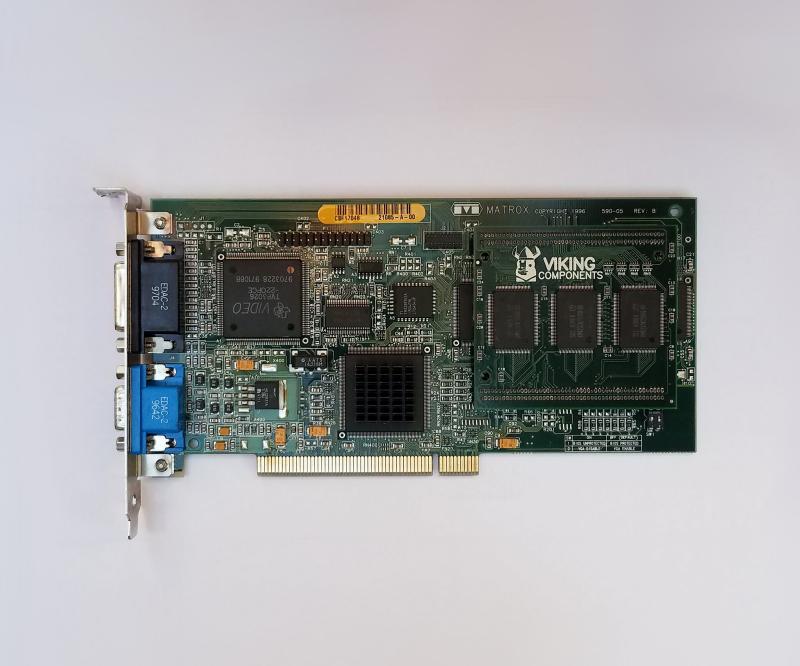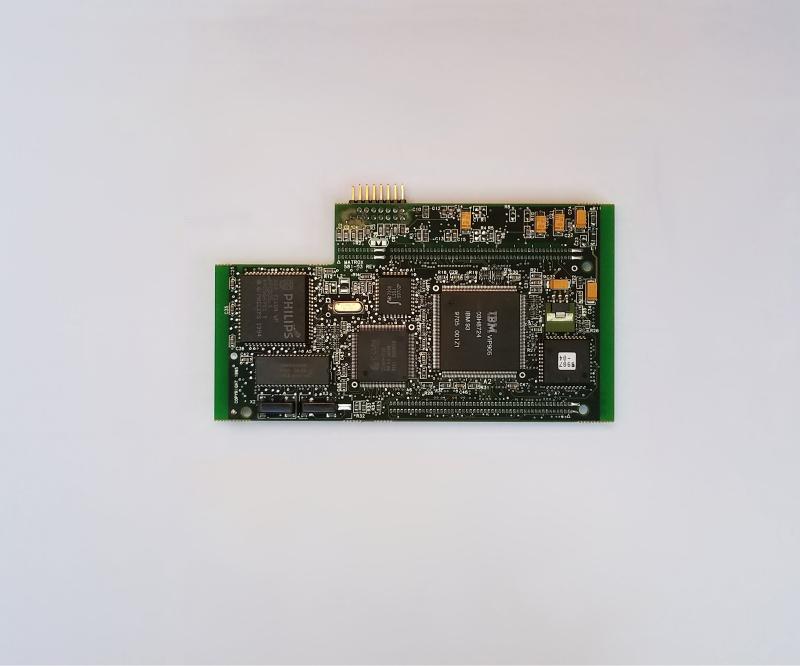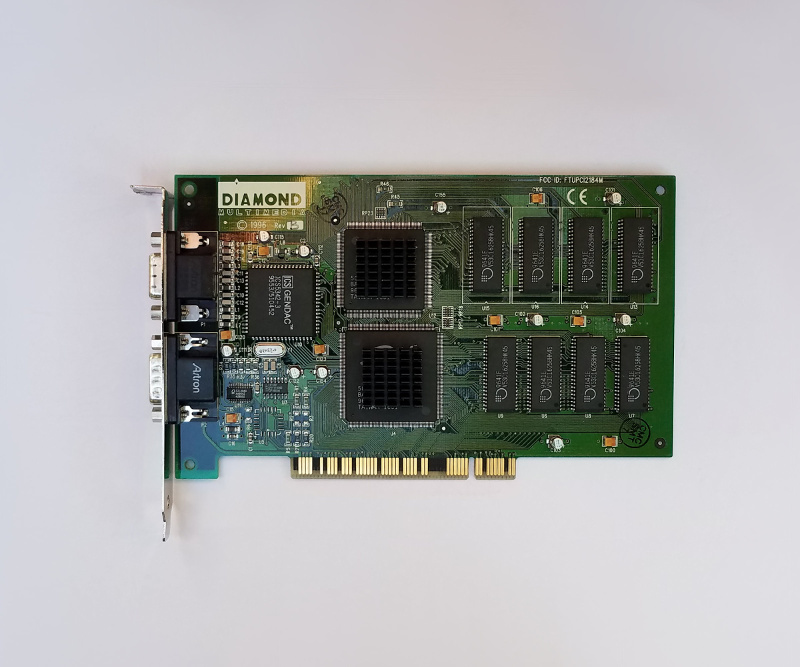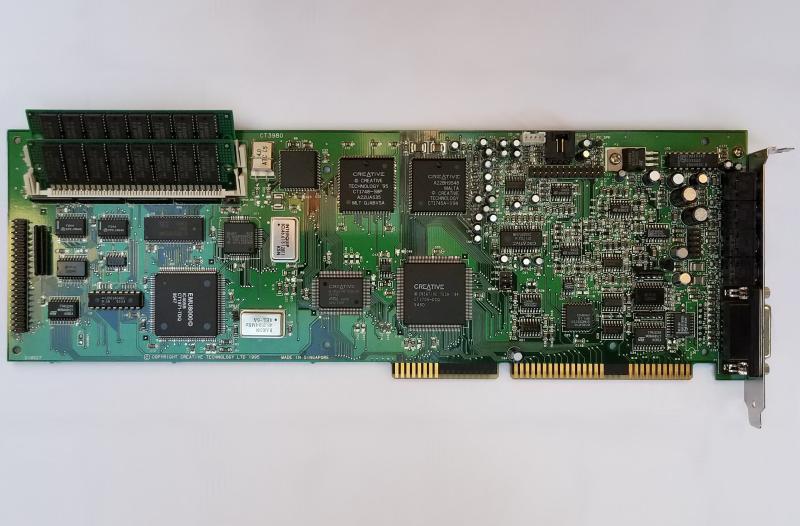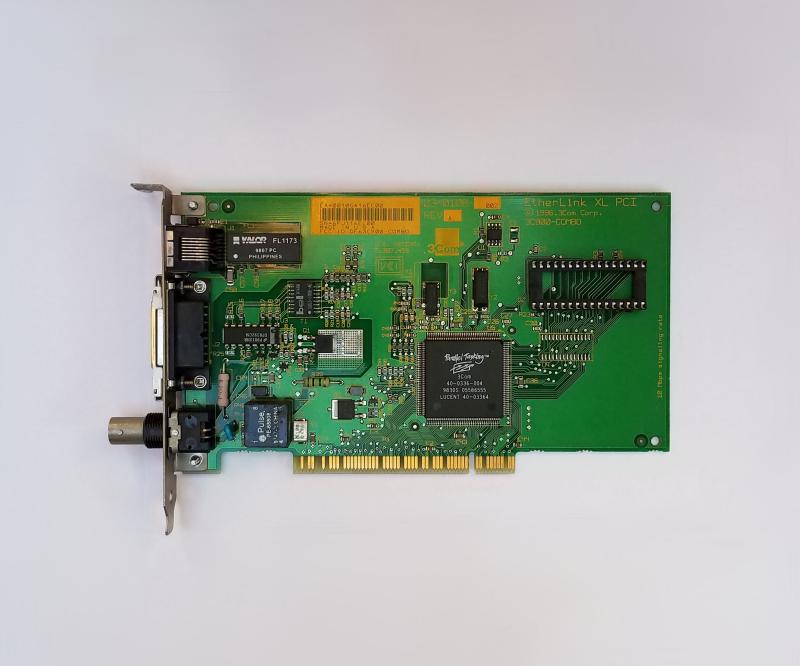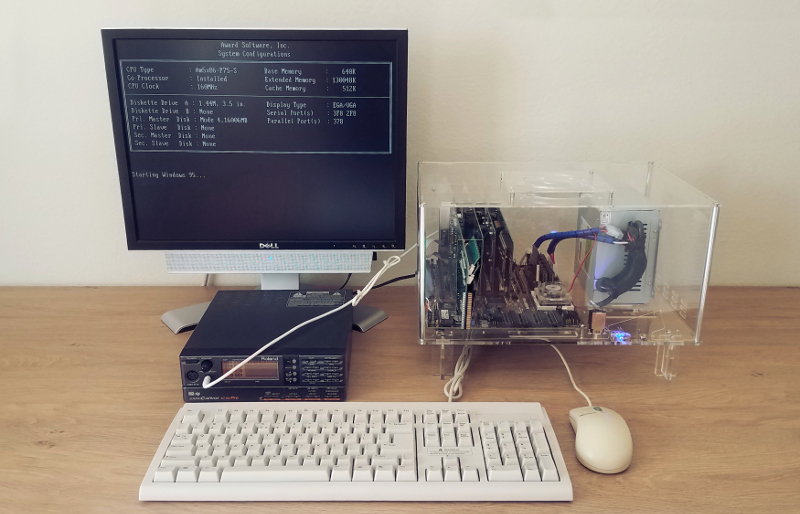First post, by pshipkov
DIRECTORY:
(ordered by hardware class)
--- 8086/8088
>>> Tandy 1000/Sl2 - good chance to be the fastest XT PC - PART 1, PART 2, PART 3
DTK PIM-TB10-Z revision 9
Superwave Super-10B (Acer M1101)
Pravetz CPU-12 / Juko ST (Acer M1101)
DTK MBX-1101 (Acer M1101)
Everex STEP NS EV-1605B
Peaktron Electronics Ltd. PX-3000 Turbo (PX3000)
GEM Computer Products GEM-10 (Faraday FE2010A-ES)
subject 3: 8087 FPU overclocking
IBM PS/2 Model 30 8530 P-Planar
--- 286
>>> [below in this post] PC built around Dunson Electronics 286-16 (VLSI VL82CPCAT-16QC consisting of VL82C100-QC, VL82C201-16QC, VL82C202-16QC, VL82C203-16QC, VL82C204-16QC) -the fastest 286 PC - phase 1
Ilon USA M216A rev 1.2
Amptron 286 VLSI Turbo (VLSI VL82CPCAT-16QC)
DTK PTM-1632C (Chips P82C211, P82C212B, P82C215)
Octek Fox-286 (Headland GC102-PC)
HAM/12-W2 (KT216WB)
MG unknown model (UMC UM82C231, UM82C206L)
>>> Dunson Electronics 286-16 - the fastest 286 PC - phase 2
Leadman Electronics Inc. LM-103FS (Headland HT12P-16/A)
PK-X486/87SD CPU upgrade module
Suntac 286H (ST62C203)
Zida Tomato TD60C (Citygate D90-272)
Snobol Mini SNB-M008 (Gold GS62C101, GS62C102)
>>> Dunson Electronics 286-16 (VLSI VL82CPCAT-16QC) - the fastest 286 PC - the fastest 287 FPU - phase 3
unknown brand/model (VLSI ‘SCAMP’ - VL82C311-L)
Amptron unknown model (VLSI VL82CPCAT-16QC)
>>> Dunson Electronics 286-16 - the fastest 286 PC - 30MHz, 0 wait-states - phase 4
>>> Protech PM286 (Headland HT18) - the fastest offline computing at 31MHz
Micronics A-B248 (Acer A1207-16)
CDTek 286M (Texas Instruments TACT82301PB, TACT82302PB, TACT82303PB)
Biostar MB-1212C REV-A5 (CHIPS ‘SCAT’ - F82C235)
Octek Fox II Rev 3.4 (Headlands HT12/A)
Epson Lynx / Epson Equity IIe (Epson E01161NA, E01165EB)
--- 386
[below in this post] PC built around PC Chips M321 rev 2.3
ASUS 386/33-64k (SiS ‘Rabbit’ - 85C310/320/330)
Elitegroup US 3486 / FX-3000/CL rev 1.0 (UMC UM82C482AF, UM82C391A, UM82C206F)
Magitronics QD-U386DX ver.1 (UMC UM82C482AF, UM82C481BF)
Octek Jaguar V rev.1.3 (Macronix MX83C306FC, MX83C305FC)
>>> DTK PEM-4036Y (Symphony ‘Haydn II’ - SL82C461, SL82C362, SL82C465) - (was) the fastest classic 386 motherboard
Magitronics TK-82C491/386-4N-D02C (UMC UM82C491F)
Abit AB-AK3 rev.0.2 (UM82C491F)
ABit AB-FA3 / Lucky Star LS 386DXA (ALI-M1419)
Kaimei ALI 386DX / LuckyStar LS-386 ALI (ALI-M1429)
Biostar MB-1333/40AEA-Q (BIOTEQ 82C3480)
MB-1340UCQ (BIOTEQ 82C3491)
ASUS ISA-386U3Q (UMC UM82C481AF, UM82C481BF)
Biostar MB-1333C-CH/1340C-CH (Chips F82C351, F82C355, F82C356)
Alaris Leopard (OPTi 82C295)
JUKO 386DX W/B (OPTi 495SX)
Alaris Cougar II (Cobalt-AT 486BL) (OPTi ‘Premium’ - 82C499 B)
DataExpert EXP3406 rev 1.1 (OPTi 82C495SLC)
Intel Rapid CAD
Asus ISA-386SIQ (SiS 85C461)
Young Micro Systems VEGA 3-486 CACHE (Symphony ‘Haydn II’ - SL82C461, SL82C362, SL82C465)
FIC 386-VC-H (VIA VT82C495/VT82C481)
Jamicon KMC-A419-8 version 1.0 (ALi M1419 A1)
IODATA PK-A486BL3-1 (BL3 CPU upgrade module) + Rectron 386DX-33 PEAK DM (Chips F82C351, F82C355, F82C356)
FIC 4386-VIO (VIA VT82C481, VT82C495)
>>> DTK-PEM-4036Y - (was) the fastest classic 386 motherboard, PART 2 - IBM BL3 at 100MHz (2x50) , ISA bus at 25MHz
Alaris Cougar II (Cobalt-AT 486BL) (OPTi ‘Premium’ - 82C499 B), PART 2 - improved stability at 100MHz
Micro Express Inc. Forex 386 Cache v3.61 (Forex FRX46C411, FRX46C402)
Biostar MB-1325VT/1333VT (VLSI VL82C330-FC, VL82C331-FC, VL82C332-FC)
Caching Tech Corporation C386MX revision 1.0 (Macronix MX83C306FC, MX83C395FC)
Siemens ROLM 98d5192 (UMC UM82C481AF, UM82C482A, UM82C206F)
Matra 486SLC2 VESA (EFAR Microsystems EF8290WB - 82EC392, 82EC495)
Soyo 386DX/33(?) revision B (ETEQ ‘Bengal’ - ET82C4901, ET82C4902)
Target Micro Typhoon 486-386/ISA (Unichip U4800)
Unknown brand/model (UMC UM82C482AF, UM82C481BF, UM82C206F)
ABit AB-FS3 (SiS ‘Rabbit’ - 85C310/320/330)
ECS MX-381 revision 1.0 (Macronix MX83C305FC, MX83C306FC)
Gemlight 386DX-3340 (Symphony ‘Haydn II’ - SL82C362, SL82C461, SL82C465)
Magitronics TK-82C491/386-4N-D04 (UMC UM82C491F, UM82C493F)
Chaintech 340SCD (SiS ‘Rabbit’ - 85C310/320/330)
Caching Technology Corporation 386/486 REV E (Efar Microsystems EF8290WB - 82EC495, 82EC392)
>>> MicroStar MS-3124 version 2.1 (Contaq 82C591 A, 82C592) - the fastest classic 386 motherboard - IBM BL3 at 110MHz (2x55), ISA bus at 27.5MHz
Unknown brand/model (CGS F82C371, F82C372)
Nic Technology, Inc. UNH433L (386/486 Ver. C) (Unichip U4800)
Micro Express Inc. Forex 386/486 rev. B2/B3 (Forex FRX46C421A, FRX46C422)
ECS Panda 386V rev 1.1 (Daewoo AL486V-D) (ALi M1429 A1 / M1432 A2, relabeled to Panda PR3029 A1, PR3031 A2)
DTK PEM-0030Y (Symphony ‘Haydn II’ - SL82C461, SL82C362, SL82C465)
Xinetron X/LAN Xi-386/486-SC rev.A (Xinetron X/LAN Xi-210-B / USA SC-9204-A)
>>> Alaris Cougar II (Cobalt-AT 486BL) (OPTi ‘Premium’ - 82C499 B), PART 3 - the fastest hybrid (VLB/ISA) 386 motherboard - IBM BL3 at 100MHz (2x50), ISA bus at 33.33MHz
BENCHMARK RESULTS
SUMMARY, interesting following discussion
--- 486
>>> [below in this post] PC built around Asus PVI-486SP3 rev.1.22 - good chance to be the fastest 486 PC at offline computing in the range of up to 160MHz
LuckyStar-486E rev.F (SiS 85C496, 85C497)
Biostar MB-8433UUD-A ver:2 and ver:3.1(UMC UM8886BF, UM8881BF), part 1
MicroStar MS-4144 ver:1.0 and ver:1.5 (SiS 85C496, 85C497)
>>> Asus VLI-486SV2GX4 (SiS 85C471) - good chance to be the fastest 486 PC for DOS interactive graphics, in the range of up to 160MHz
Asus VLI-486SV2GX4 (SiS 85C471) with Inter Pentium Overdrive P24T running at 100MHz (POD100) - the highest Quake 1 score on socket 3 hardware
classic PC in a cardboard case
DTK PKM-5031Y (Symphony ‘Haydn II’ - SL82C461, SL82C362, SL82C465)
Chicony TK8880F / 2066A2 (UMC UM8881F, UM8886F)
FIC 86-VIP-i02 (VIA 82C505, 82C496G)
FIC 86-VIP-i02 - mod for 4x multiplier
Edom International Corporation 486VL3 (OPTi 82C822, 82C895)
UMC UM886#F IDE drivers by Feipoa
PC-Chips M912 v1.7 (UMC UM8498F, UM8496F)
Young Micro Systems MB-SW486G-3VL-v11 (Symphony ‘Wagner’ - SL82C492, SL82C491)
UMC UM8886BF info by Feipoa, following discussion
Biostar MB-8433uud-A rev:2 and rev:3.1 (UMC UM8886BF, UM8881BF), part 2
1024Kb L2 cache mod for Biostar MB-8433uud-A, part 3
512/1024Kb L2 cache mod for Biostar MB-8433uud-A, part 4
Biostar MB-8433uud-A at 4x50 and 3x66 conclusion, part 5
Biostar MB-8433uud-A revision 3.1, running at 200MHz on air cooling, part 6
LuckyStar LS-486E rev:D (SiS 85C496, 85C497), part 1
Zida 4DPS, TMS PCI-400 (SiS 85C496, 85C497), part 2 - 200MHz
LuckyStar LS-486E revision C2 (SiS 85C496, 85C497)
PC-Chips M918i revision 1.2 (ALi M1489 A1, M1487 A1)
PC-Chips M918i revision 1.2 - uncovered the L2 cache mistery
Shuttle HOT-433 version 4 (UMC UM8886BF, UM8881F)
Shuttle HOT-433 version 1 (UMC UM8886BF, UM8881F)
Chicony TK8880F / 2066A2 (UMC UM8886F, UM8881F) at 180MHz
PC-Chips M919 V3.4B/F (UMC UM8886BF, UM8881F), Feipoa's fully stable 180MHz M919 blaster, perf numbers
several subjects, studying Peltier cooled CPU problems
>>> good chance to be the fastest 486 PC, based on LuckyStar LS-486E rev:D, part 2
Octek Hippo 12 VIP (UMC UM8886F, UM8881F)
Gigabyte GA486AM/S revision 2.2x (UMC UM8886AF, UM8881F)
Abit AB-PB4 rev 1.3 (ALi M1489 A1)
Abit AB-PB4 rev 1.5 (ALi M1489 A1, M1487 B1)
APC Predator 747 (Chips CS4041)
NICE SuperEISA (SiS 85C431, 85C411, 85C406), tested with wide range of VLB graphics cards
MicroStar MS-4144 (SiS 85C496, 85C497) at 200MHz
QDI V4P895GRN/SMT1.0 (OPTi 82C895, 82C602A)
PCI400C-C (SiS 85C496, 85C497), benchmarks
Soyo 4SA2 (SiS 85C496, 85C497) with Am5x86 at 200MHz and with Am5x86 at 160MHz and POD100
>>> Chicony CH-471B rev 2.0 (SiS 85C471) - the fastest ISA/VLB motherboard
DTK PKM-0033S E-0 (SiS 85C496, 85C497)
FIC 486-PIO-3 (VIA VT82C505, VT82C496, VT82C416)
Chaintech 486SOM M102 (SiS 85C496, 85C497)
Chaintech 486SPM M104 (SiS 85C496, 85C497)
Chicony CH-881A (UMC UM8886F, UM8881F)
Young Micro Systems VEGA MB-SYP243LV-V12 (Symphony ‘Haydn II’ - SL82C632, SL82C461, SL82C465)
Asus VLI-486SV2GX4 at 200MHz
Young Micro Systems VS486G-3VL, VEGA 486 Green PC (Symphony ‘Wagner’ - SL82C491, SL82C492)
ALD PCI 5433 (ALD 93C413)
DTK PKM-00395 (SiS 85C471, 85C407)
Addtech Galaxy II 486 revision 1.0 (Contaq 82C596 A3, 82C599)
Unknown brand TDVIP-2 (IMS IM8848, IM8849)
Chicony CH-498B revision 3.0 (UMC UM8498F)
80MHz FSB, Shuttle HOT-433 rev.4 and several other motherboards running at 2x80=160MHz
Sunnylab SYL8884PCI-EIC (UMC UM8881, UM8886BF)
Kaimai KM-S4-1 rev. 1.1 (SiS 85C496, 85C497)
MiTAC/Trigon IH4077D rev D1 (EFAR EC100G, EC802G, relabaled OPTi802GP)
AMI Super Voyager PCI-II (SiS 85C496, S85C497)
Shuttle HOT-433 rev.1 with Intel 486DX4-100 running at 150MHz
MSI-4143 ver:1.2 (ALi M1445 A2, M1439 A3, M1431 A2)
BENCHMARK RESULTS with Am5x86 running at 160MHz (4x40)
BENCHMARK RESULTS with Am5x86 running at 180/200MHz (3x60, 4x50, 3x66)
BENCHMARK RESULTS with Intel Pentium Overdrive P24T (POD100) running at 100MHz (2.5x40)
--- Pentium 1
Intel Batman's Revenge (Intel 430LX), socket 4
Freetech 586F61-PB (Intel 430FX), Cyrix 6x86-P166+, Pentium-75, Pentium-90
SuperMicro P54VL-PCI (OPTi 82C822, 82C597)
--- Pentium 3
Supermicro S2DGE (Intel 440GX)
Tyan Tiger-133 (VIA Apollo Pro 133)
Asus P2B-D (Intel 440BX)
professional AGP 3D graphics cards
IBM Intellistation M Pro, Type 6868 (Intel OR840)
Dell Optiplex G300 (Intel OR820)
Asus P3C-D (rev. 1.13-A06) / HP Kayak XM600 (Intel OR820)
>>> Asus P2B-D (Intel 440BX) - good chance to be the fastest Slot1 PC
Freeway FW-6280BXDR/155 (Intel 440BX)
Tekram P6B40D-A5 rev:1.0 (Intel 440BX)
Asus XG-DLS rev:1.03 (Intel 440GX)
comparison of Celeron/P3 Coppermine/Tualatin processors at the same CPU and FSB frequencies
--- various topics (VGA, IDE, SCSI, HDD, CF ...)
>>> comparison of VLB/PCI video graphics cards
brief comparison of ISA video adapters
comparison of ISA/VLB/PCI video adapters
comparison of different S3 Virge video adapters
comparison of Cirrus Logic GD-5434 ISA video cards
Trident ISA/VLB/PCI video card models and related notes.
performance comparison of wide range of VLB/ISA graphics cards, by user PC-Engineer
comparison between different VLB models of S3 Vision964, 868 and S3 Trio64, Trio32
subject 1: image quality comparison for various 6/8/15/24-bit RAMDACs,
subject 2: chance of finding 486 CPUs capable of 180/200MHz
VLB graphics and EIDE adapters running at 80MHz FSB, notes about WDC WD90C33-Z and ET4000/W32 "i" and "p" variants
buck generator + interposer for precise voltage control of 486 CPUs made by Intel and AMD
>>> comparison of ISA IDE, EIDE, SCSI controllers
>>> comparison of VLB IDE, EIDE, SCSI controllers
3 hard drives and 486 DX2-66/80 CPUs
CF cards for retro PCs
more UMC UM8886#F information, by jakethompson1
observations about IDE/SCSI pros/cons with 286, 386, 486 class hardware
30-pin SIMM RAM modules, performance characteristics, summary
vintage electronics baking for reflowing joints (with following discussion)
retro brightening of ABS plastic with acetone (+ following discussion and details)
keyboard controllers matter for 286/386/486 overclocking
-----------------------------------------------------------
First post on the forums.
Presenting you 3 retro "battle stations", resembling PCs from 1990, 1993 and 1996.
Getting them up and running was quite a journey - going back through my memories, identifying and finding components, restoring them, putting everything together, breaking and fixing stuff (nested loops).
During my research phase i realized that many of us often mix and match components from different generations to achieve best/worst performance, better stability, other more obscure goals, or because that's what we had on the shelf at the time.
Instead, i wanted to stay true to the given platform and its time period. So, i avoided any DLC/POD upgrades and made sure that no piece of hardware/software is from later year than the one marked on the calendar.
Well, with one exception - after couple of setbacks with failing old HDDs, i ended up substituting them with CF cards. For now ...
What else ?
Any overclocking and other tweaks had to be long-term stable. End goal was to build computers that work for real.
No ATI video cards.
Looking back, i realized that somehow i never owned ATI hardware.
Well, except for a FirePro v7900 couple of years ago, but it was donated by ATI, so it kind of does not count. Wonderful card btw !
To keep the tradition alive, i passed on Wonder/Edge-16, Mach32 and 3D Rage II for the 3 rigs, respectively.
No Pro 3D accelerators.
I guess my choice of timings was less than ideal considering the situation with such cards back then.
In 1996 - Intergraph, 3DLabs, Dynamic Pictures, etc., were targeting Pentium/WinNT systems with their second generation 3D accelerators, but not a 486/Win95 one. They didn't even have proper (or any) drivers for Win95. At some point i considered strapping GLINT 500TX/DELTA, or Oxygen, but then common sense prevailed and i went with cards that are more natural fit for the system.
In 1993 - Everything interesting related to 3D accelerators for the PC was happening on the first Pentium/PCI systems, but not a 386/ISA one.
In 1990 - What professional PC 3D cards ? The low/mid-end pro graphics was Amiga territory. There were handful of CADs and pretty much no graphics software for the 286.
SoundBlaster fanboy ?
Not really, just being practical with the sound setup, with focus on compatibility.
Never owned a GUS for example. Curiosity is significant, but prices are chilling. 😀
Computer cases:
I didn't want to hide the carefully selected and assembled hardware inside standard PC cases.
Instead, i modified 3 ATX acrylic ones to fit the AT components. This took a lot more work than expected, but the result was worth it, i think.
286 from 1990
Some of the best 286 designs emerged around that time. The platform was in its prime, but with 386 rapidly growing in popularity and the first 486 systems introduced to market the year before - writing was on the wall already.
Still, highly integrated 286 chipsets kept showing in the following 2-3 years, but they didn't introduce anything more interesting than compact form factors.
Piece of sweet memory:
I clearly remember the moment when i saw for the first time VGA graphics on my 16MHz 286.
Shaky fingers swap old CGA card and monitor with fresh VGA ones (Trident + 14" 0.36 dpi CRT). PC is on, first game shows-up on screen. The young individual in front of it is deeply moved.
Today people think that Apple keynotes are magical.
Sure. 😜
HARDWARE
- motherboard: Dunson Electronics 286-16 (VLSI VL82CPCAT-16QC)
cpu: Intersil CS80C286-25 25/30MHz
fpu: IIT 2C87-20 22MHz
ram: 4Mb 60ns parity FPM
vga: Diamond SpeedSTAR 24 1Mb (Tseng Labs ET4000AX, 24-bit DAC) (primary)- Diamond Flower VG-1000 rev 2 512Kb (Cirrus Logic CL-GD510/520)
Trident TVGA8800CS rev 2.0 512Kb
Western Digital WD90C00-JK 512Kb
OTI-037 512Kb
Ahead V5000-50PC-B 1Mb
Headland GC208-PC 1Mb
audio: Sound Blaster 1.5 CT1320C with C/MS
lan: Tiara Lancard/E-PC 16
psu: 300W AT
input: BTC 5121, MS Mouse
os: DOS 4.01 + Windows 3.0
partitions: 1x504Mb - Diamond Flower VG-1000 rev 2 512Kb (Cirrus Logic CL-GD510/520)
NOTES
The system works really well at 25MHz with 0 wait states and 30MHz with increased wait states, but it took quite an effort to "climb that mountain". For example, finding the right memory modules was a memorable experience by itself.
No SCSI ?
The top SCSI controller at the time AHA-1542B is actually slower than what this motherboard does with IDE.
SCSI's max data transfer rate is below 2.8Mb/s (all settings on max), while the IDE goes way over 3Mb/s.
[EDIT] The story evolved with:
Improved ventilation, complete long-term stability: Re: 3 (+3 more) retro battle stations
and 27.5MHz + Cyrix FPU FTW: Re: 3 (+3 more) retro battle stations, probably the fastest 286 class PC around here.
Upgrade with TI 486SXL2-50 @66MHz CPU for extra cool (or weird).
And the latest development - evolution to 30MHz and 0 wait states.
THE CULPRITS
286 at 25MHz
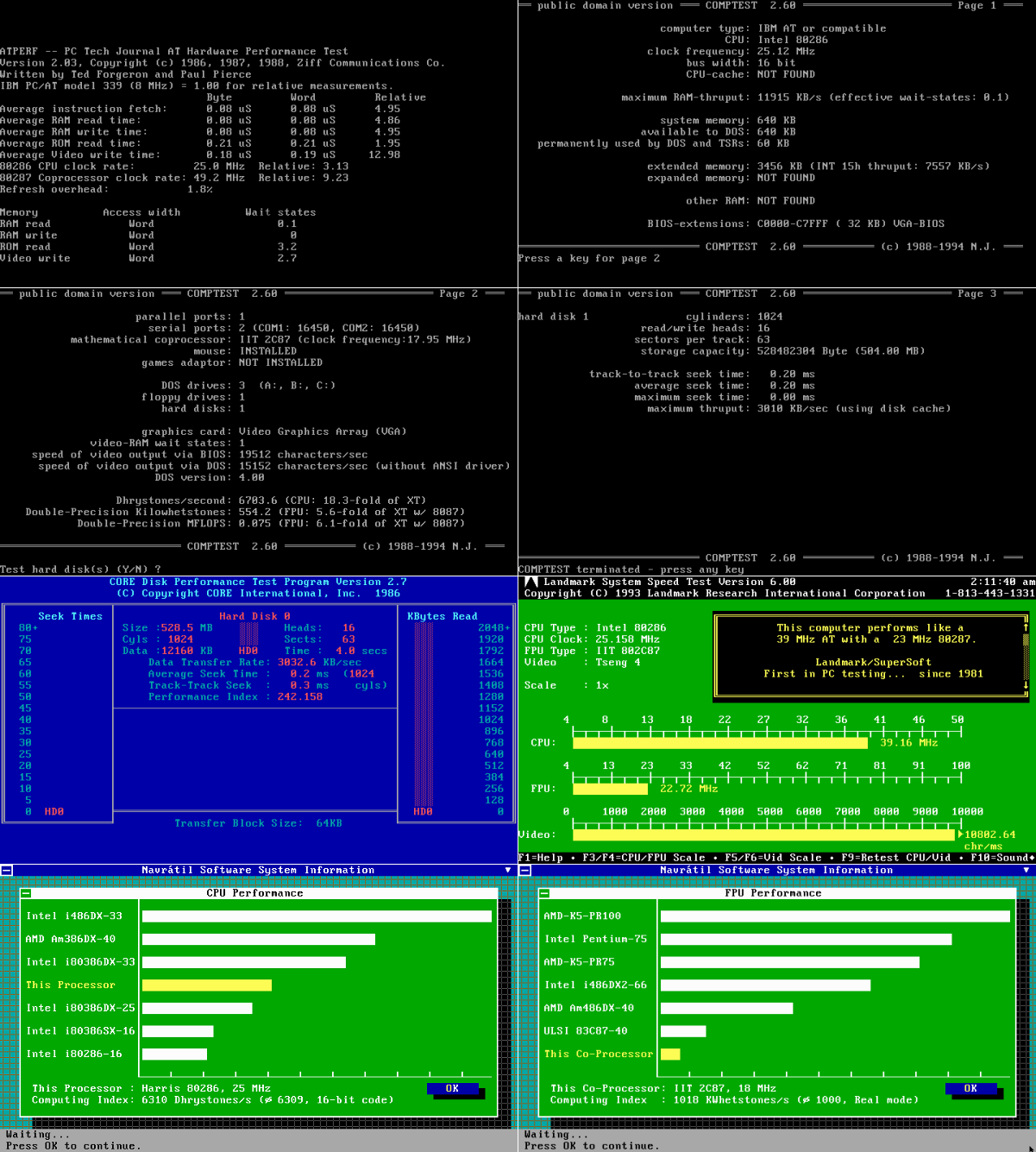
286 at 30MHz
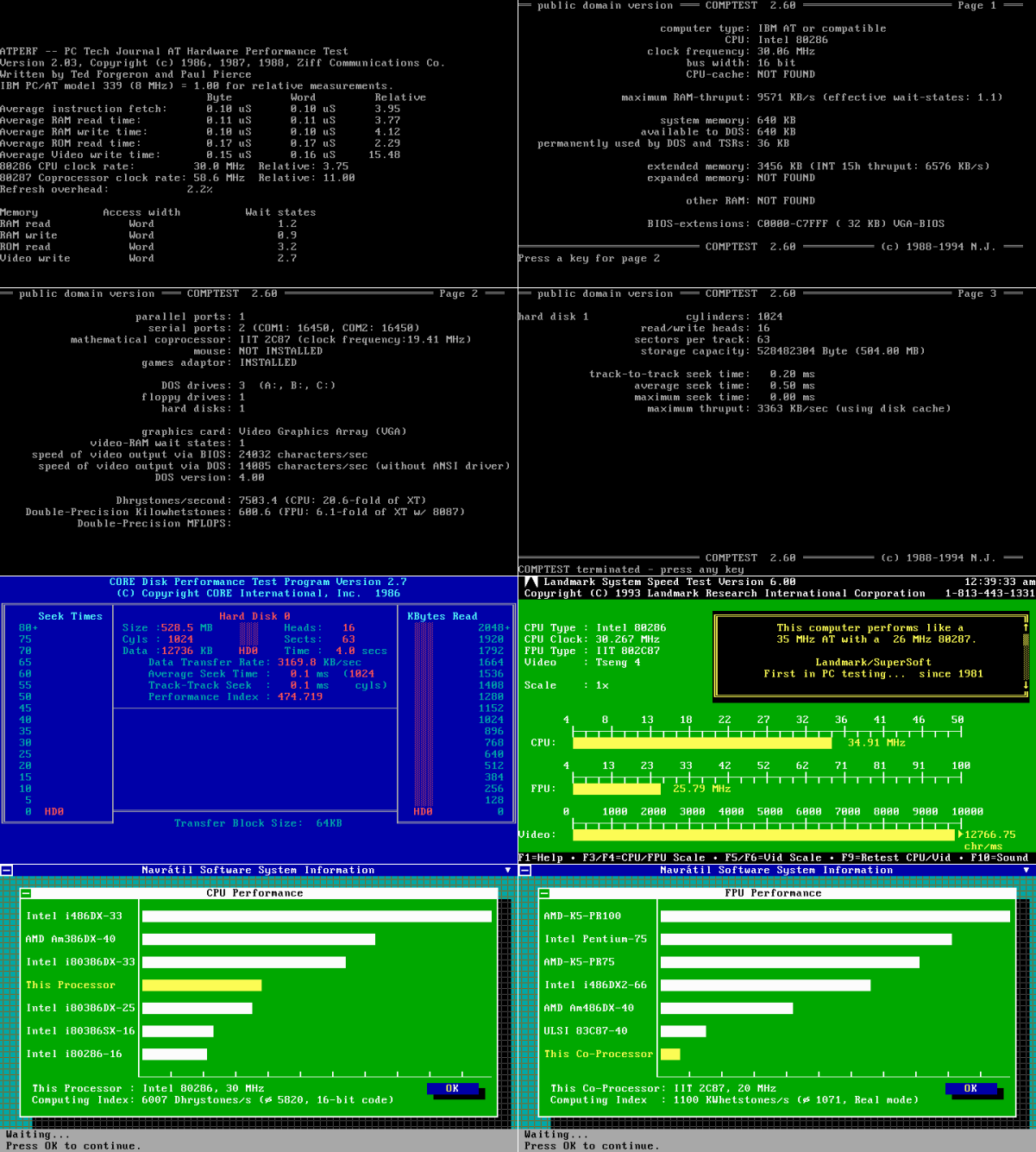
386 from 1993
Until then a good 386 system was able to hold its ground (well, more or less) against an average 486SX/DX one, especially if one considers the price-performance ratio, but the newer 486DX2 designs from 1992 changed that for good. Around that time 486 became the mainstream and the first Pentium CPUs were introduced to market. This indicated the end of the platform.
Another melodramatic insert:
Summer job paid for a shiny Sound Blaster 2.
Bought it. Back to the bus stop. Every minute is eternity. Bus finally coming.
Back home. Installing. Connecting the sound system with beefy speakers. Starting Dune 2. Watching the intro.
Transformative experience.
HARDWARE
- motherboard: PC Chips M321 rev 2.3, 256Kb 12ns L2 cache (* read update notes below)
cpu: AMD Am386DX/DXL-40 40/45MHz
fpu: Cyrix FasMath CX-83D87-33-GP 40/45MHz
ram: 32Mb 60ns parity FPM
vga: Genoa Systems Windows VGA 24 8500 1Mb (Cirrus Logic GD-5426) with Diamond Speedstar BIOS (primary)- Cirrus Logic GD-5420 512Kb
Tseng Labs ET4000/W32i 2Mb
Tseng Labs ET4000AX 1Mb
Artist Graphics WinSprint 1000i (5075) 2Mb + 8Mb 60ns for applications / Chips F82C450D 512Kb
Trident TVGA9000C 512Kb
Trident TVGA8900CL-C 1Mb
Realtek RTG3105 512Kb
ELSA XHR Winner 1000 2Mb (S3 928)
UM85C408AF (512Kb)
WDC90C30-LR (1Mb)
- PTI-227 (W83757F)
lan: Intel Ethernet 16-Bit LAN Adapter FA82595TX
psu: 300W AT
input: BTC 5121, MS Mouse 2.0A
os: DOS 6.2 + Windows 3.11
partitions: 1x504Mb - Cirrus Logic GD-5420 512Kb
NOTES
Speedsys gives lower score for 386 CPUs if FPU is present. All other tests indicate consistent CPU performance.
Increasing the L2 cache to 256Kb and adding WB chip improves performance by couple of %.
The system works really well at both 40Mhz and 45MHz with 0 wait states.
When at 45MHz it requires "cool-down" time between cold restarts. Significant effort went into identifying the source of the problem. At the end, it turned out to be the cache chips being very sensitive to heat. Will slap active cooling on them at some point soon.
Cyrix's FasMath CX-83D87-40-GP (black top) is actually slower than CX-83D87-33-GP (gray top) by 2-3%. This is confirmed by the rendering tests.
A hint in this thread A brief comparison of 386 FPUs sparked my interest to compare the two more carefully.
S3 928 does not cooperate when the CPU is running at 45MHz.
Also, despite the 2Mb of installed memory, the driver maxes out at 800x600x8bit in Windows 3.1x, which is disappointing, because the Vibrant driver tells different story.
A lot more disappointing was the fact that WinSprint's Windows 3.1 driver does not support High and True colors either. Real shame for such an amazing GUI accelerator.
*UPDATE 2020-01-26:
The PC-Chips M321 motherboard has been replaced first with Forex FX-3000 and then with DTK-PEM-4036Y - probably the fastest clean 386 class PC around here.
*UPDATE 2020-05-03:
While the initially used Sound Blaster 16 CT1750 v4.05 is period correct for year 1993, it just didn't feel right for 386 class computer, so Sound Blaster Pro 2 CT1600 took its place. It is a more natural fit for this PC.
THE CULPRITS
386 at 40MHz
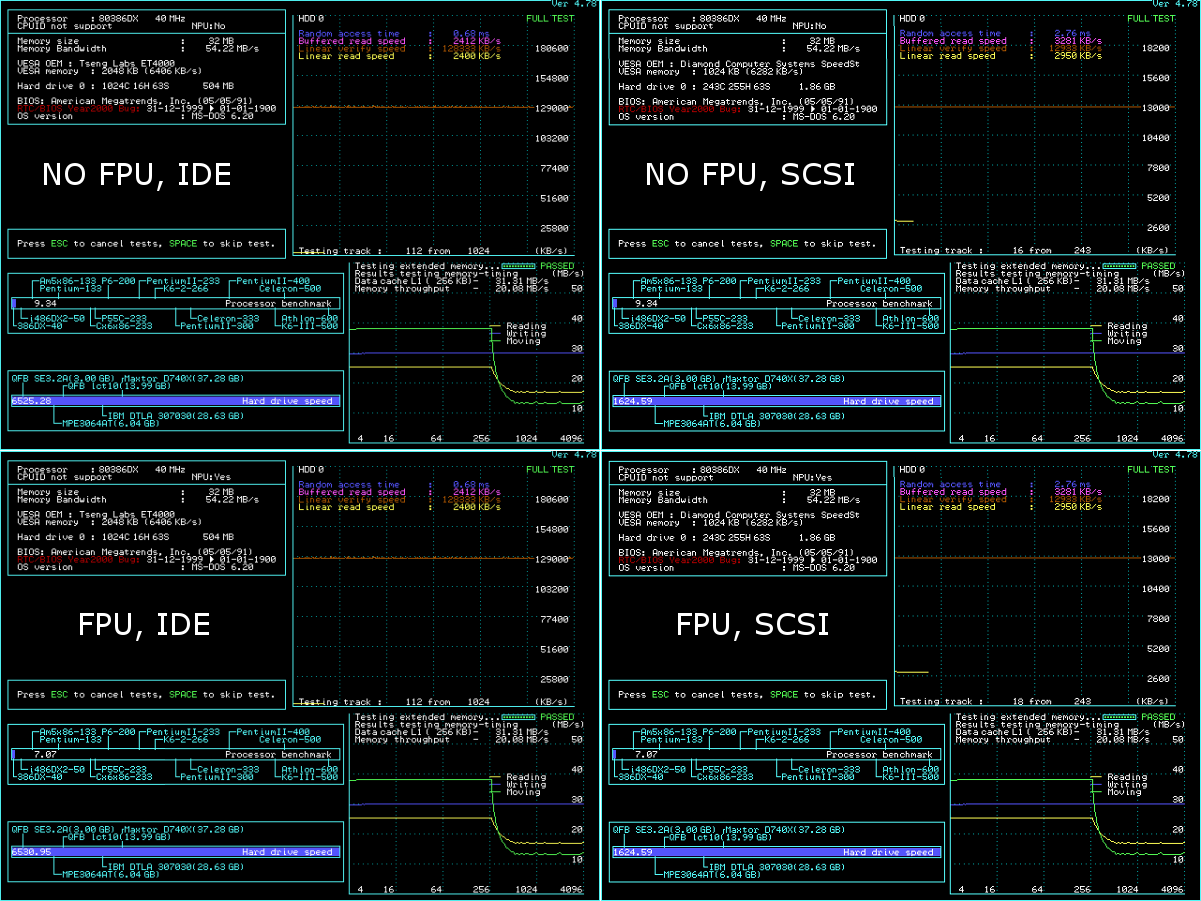
386 at 45MHz
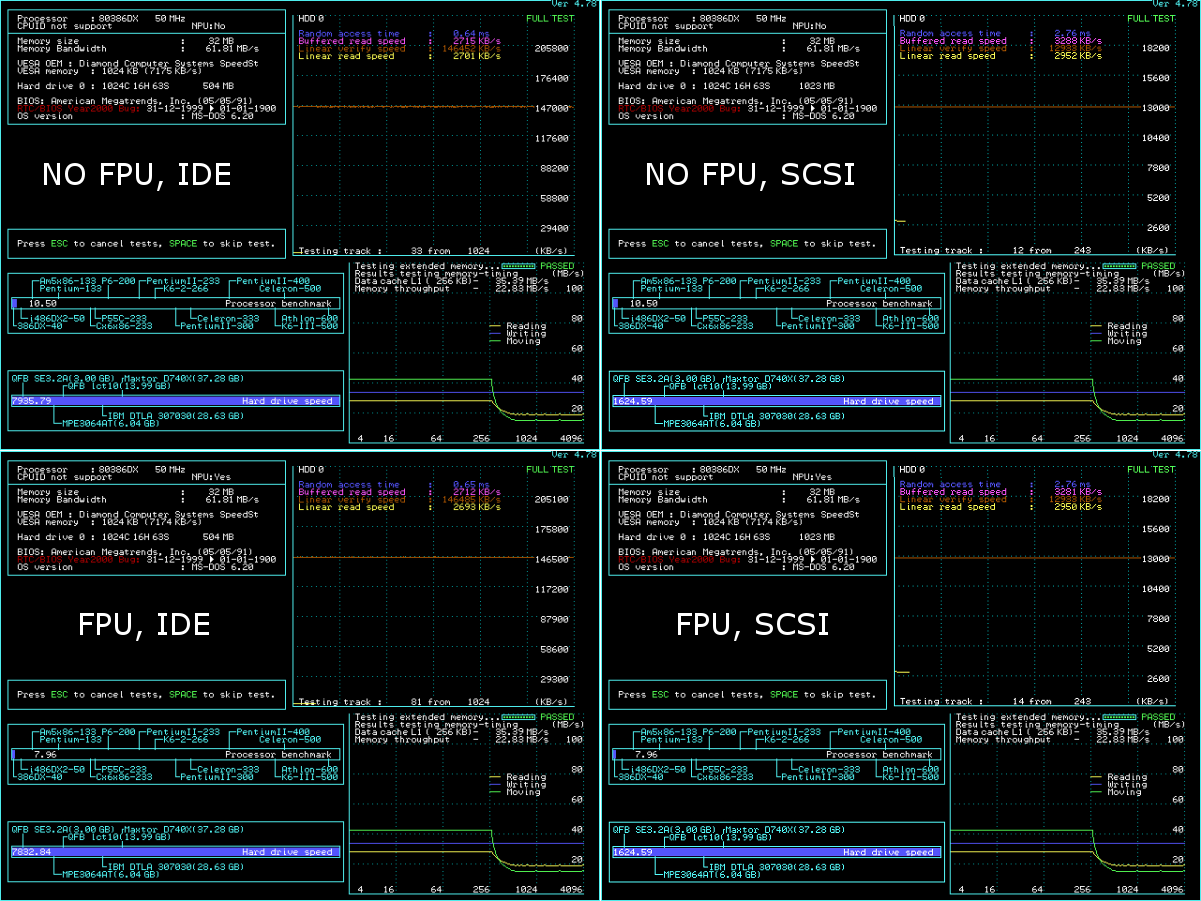
486DX5 from 1996
486DX5 was introduced at the end of 1995.
Pentium took-off for real in the mid 90-ies.
Some of the best 486 designs emerged around that time, but also, these were the last golden days of the platform.
Last one:
From early age i was feeling artsy ... or something, so i had this urge to visualize my ideas. This was bad for the trees.
Once i got into computers, the understanding of what they can do in regards to art quickly trickled-down my head and in the mid '90-ies i found myself with a massive interest in computer graphics and software development.
Of course, the results i produced at the time were not exactly impressive, so the only real measurable effect was my desire for powerful hardware.
That second part was unpopular at home and the 486DX5 had to be the popular hardware of choice in my room.
HARDWARE
- motherboard: ASUS PVI-486SP3 rev 1.22, 512Kb 10ns L2 cache
cpu: AMD-X5-133ADZ 160MHz (primary)- AM486DX5-133V16BGC 160Mhz (1999)
Intel A80486DX4-100 100MHz
vga: Matrox Millennium 590-05 REV B (Matrox MGA-2064W-R3), 8Mb (with Viking memory expansion card), or 4Mb (with Phillips 7110A video capture card)
3d: Diamond Monster 3D (3DFX Voodoo), 4Mb
audio: Sound Blaster AWE32 CT3980 (OPL3 MIDI) 32Mb
lan: 3Com 10/100 3C905-TX rev A
psu: 450W AT
input: BTC 5121, MS IntelliMouse 1.1A
os: DOS 6.22, Windows 95 OSR2
partitions: 4x504Mb - AM486DX5-133V16BGC 160Mhz (1999)
NOTES
My favorite motherboard.
It smells and feels 486 (socket 3, VESA, FPM, PIO 4), mixed with the right set of "next-gen" tech (PCI, PnP, on-board IDE), all wrapped in a fast and reliable package that just works.
This was the product that made me notice the ASUS brand back then - a gift for them that keeps giving.
Increasing the Level 2 cache size to 512Kb (from the default 256Kb) improves performance by 1-3%.
For example, Quake 1 went from 16.9 to 17.3 FPS.
The system works so reliably at 160MHz with the AMD CPU, that i don't even consider it being overclocked.
It looks like the 1996 ADZ version of the AMD chip is a tiny bit slower than the BGC one from 1999.
For example, Speedsys shows score difference of 0.04 (59.94 vs 59.98). This is confirmed by the rendering tests as well.
The Intel CPU running at 120MHz completes all DOS games and other benchmarks, but is unable to finish, or sometimes even start, any 3D rendering tests.
Why no SCSI ?
Not convinced that the SCSI will outdo the current IDE performance of about 10 Mb/s. Will verify at some point later, but for now is low priority.
486DX5 at 160MHz
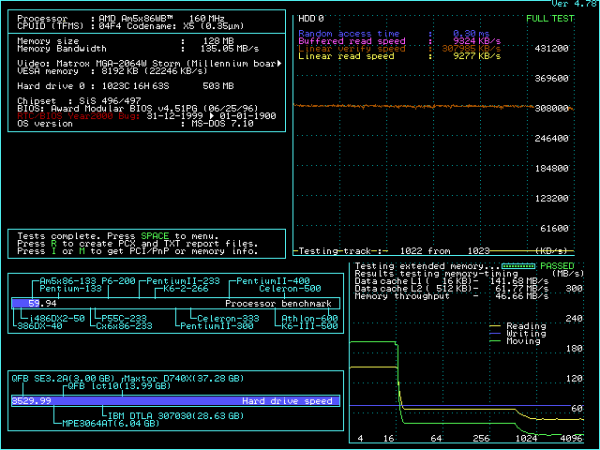
The board has clock generator that can go past 50MHz, but the system is unstable at 4x50 MHz.
Used trusted components that handle these frequencies just fine with other motherboards.
BENCHMARKS
As you noticed, each PC has multiple video cards in its specs.
I wanted to see how they stack against each other.
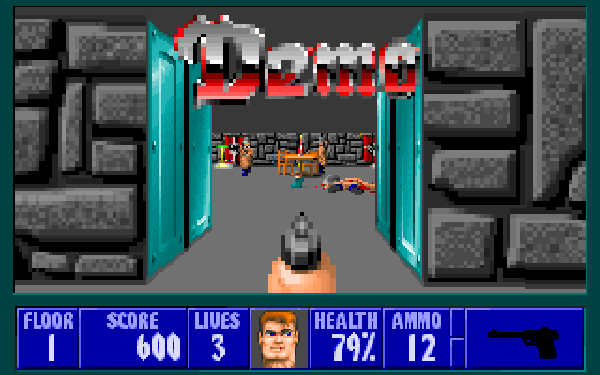
286 30MHz
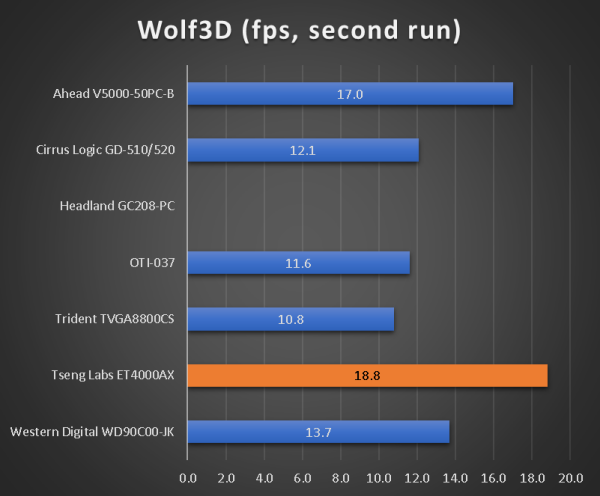
286 25MHz
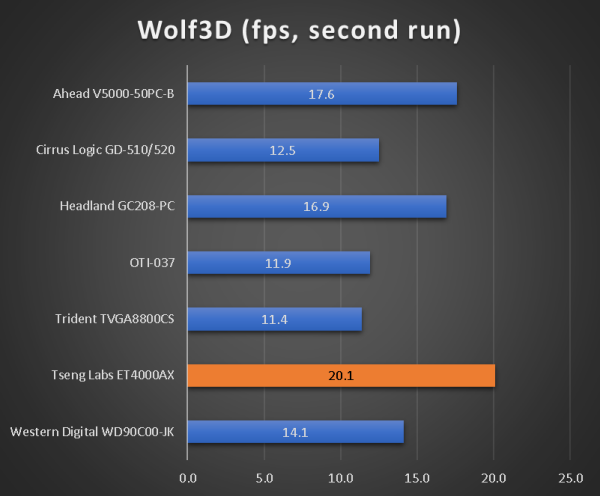
386DX 40MHz
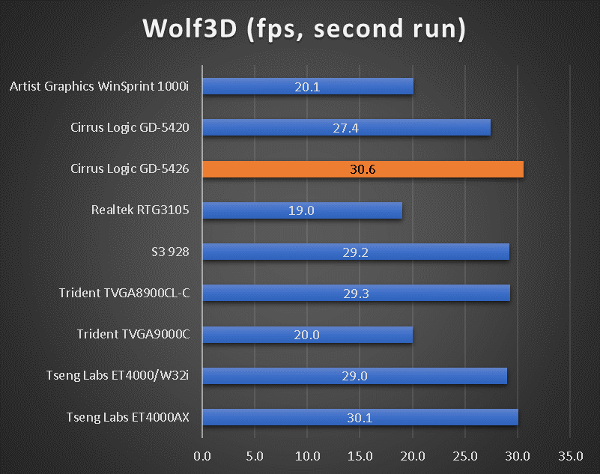
386DX 45MHz
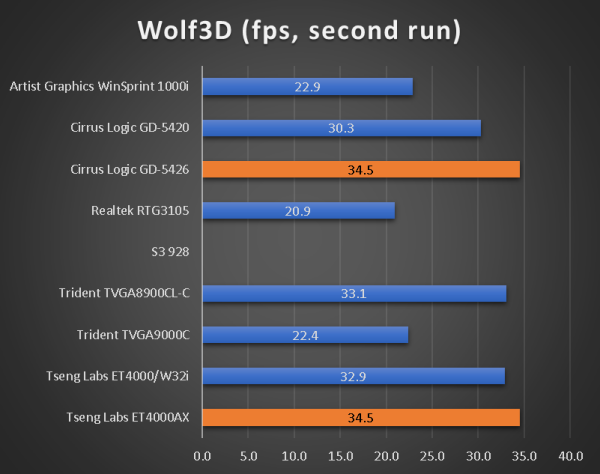
486DX5 160MHz

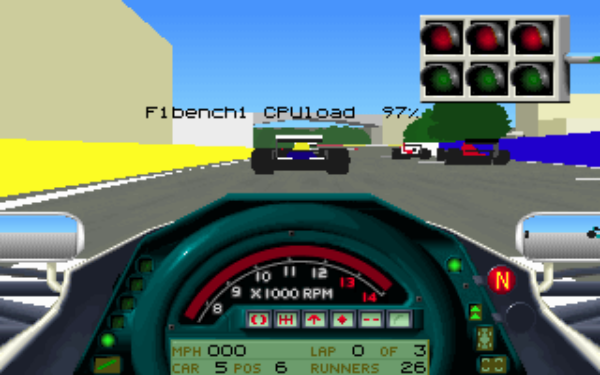
286 30MHz
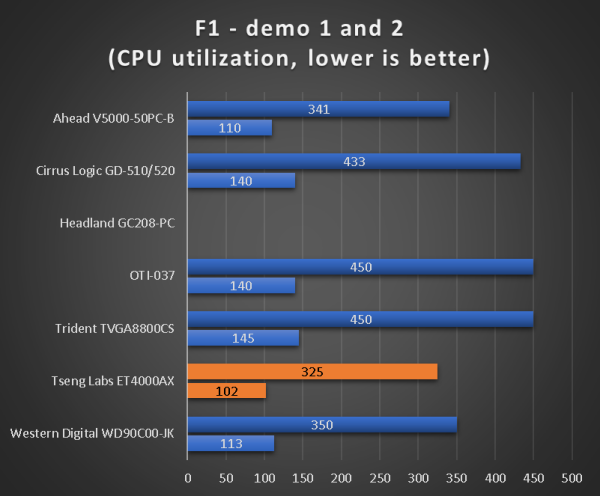
286 25MHz

386DX 40MHz
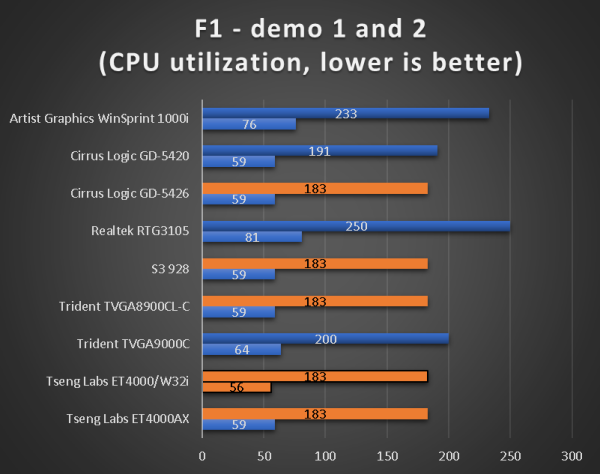
386DX 45MHz
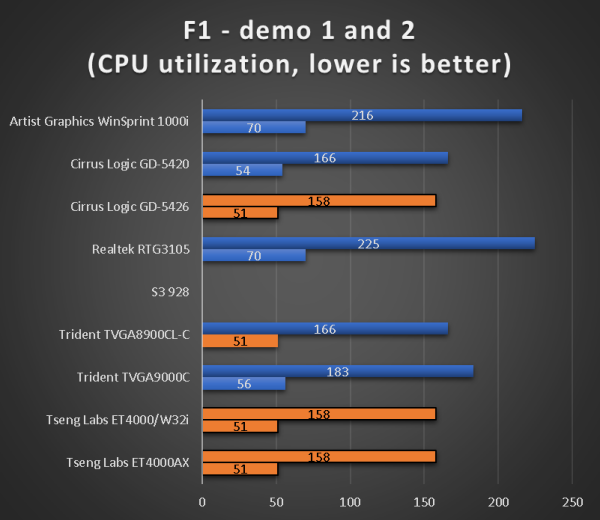
486DX5 160MHz
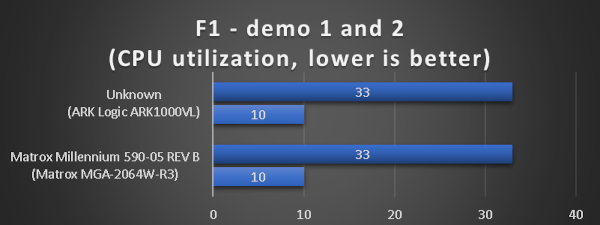
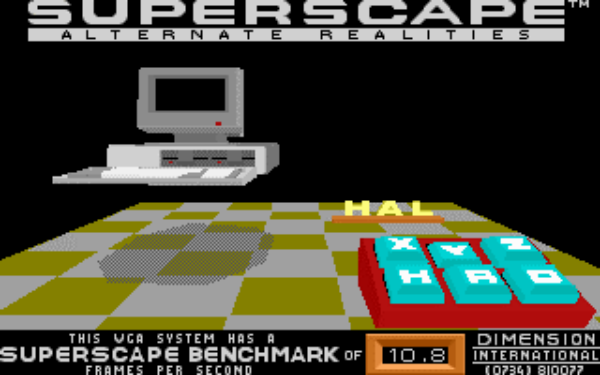
286 30MHz
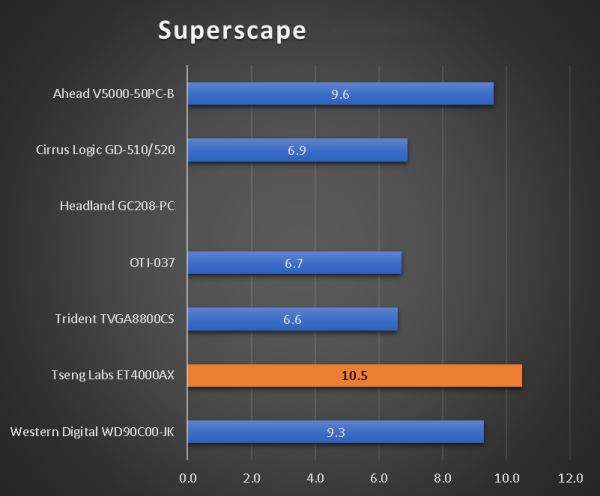
286 25MHz
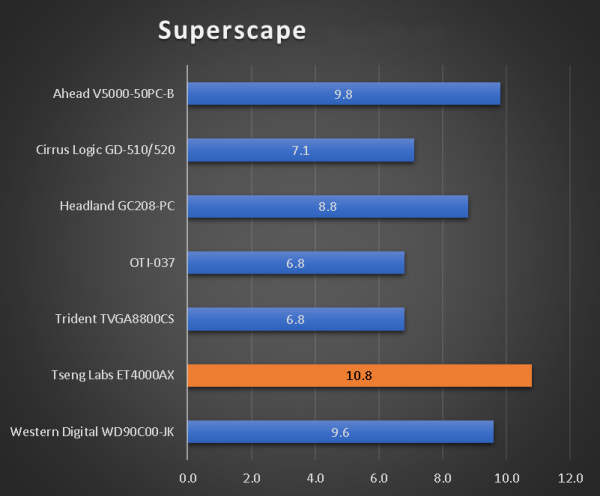
386DX 40MHz

386DX 45MHz
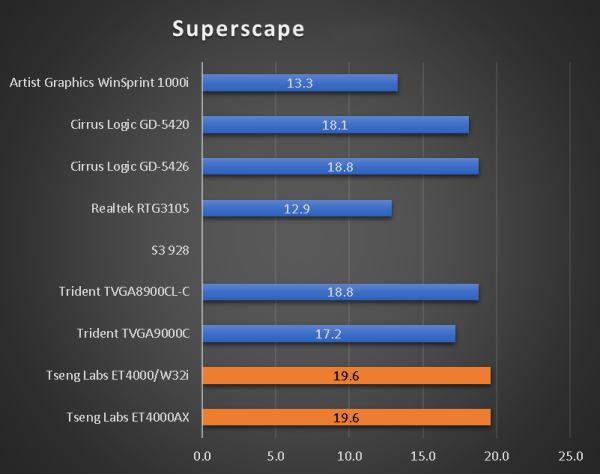
486DX5 160MHz

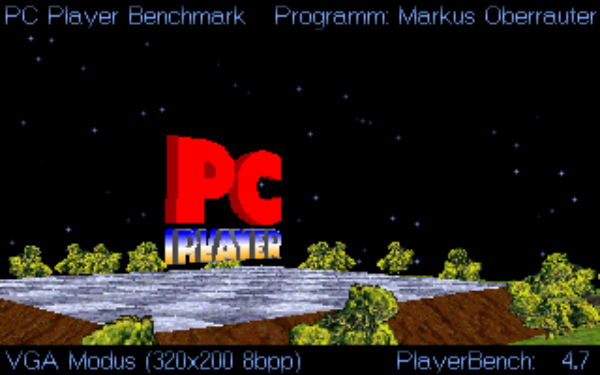
386DX 40MHz
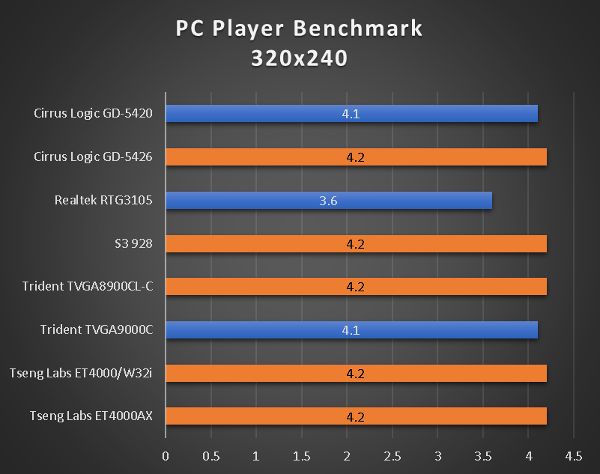
386DX 45MHz
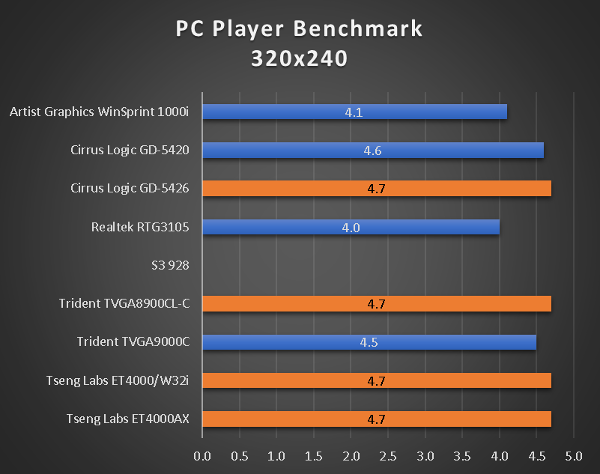
486DX5 160MHz

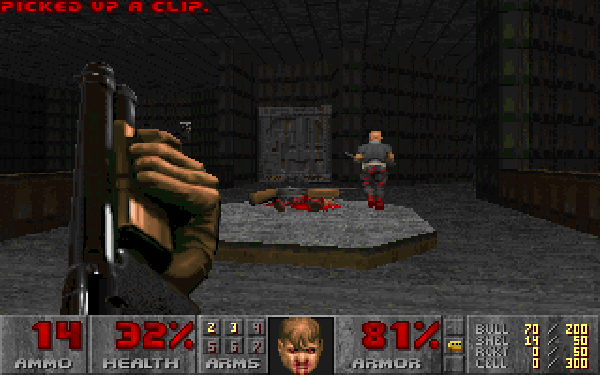
386DX 40MHz
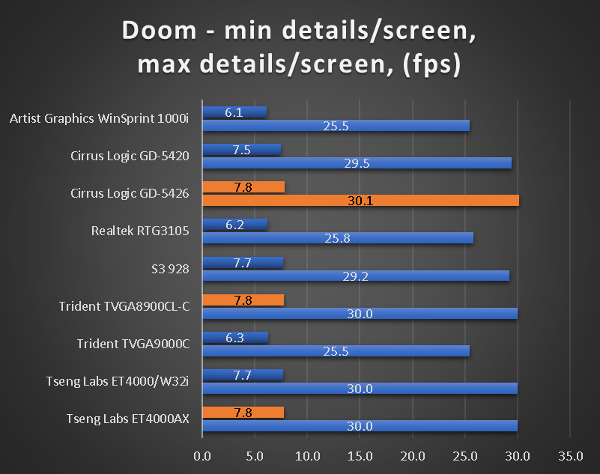
386DX 45MHz
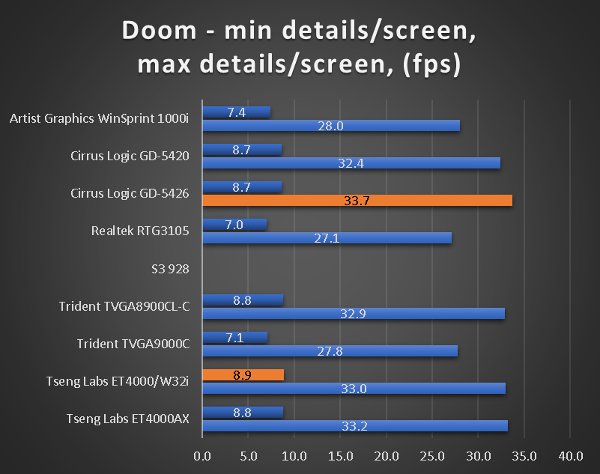
486DX5 160MHz

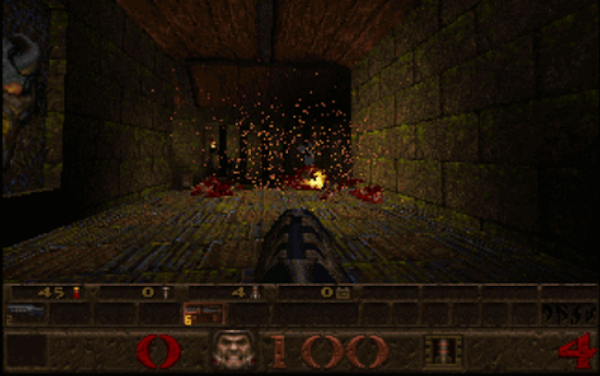
486DX5 160MHz

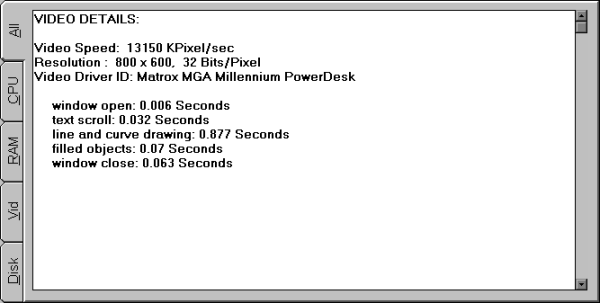
386DX 40MHz
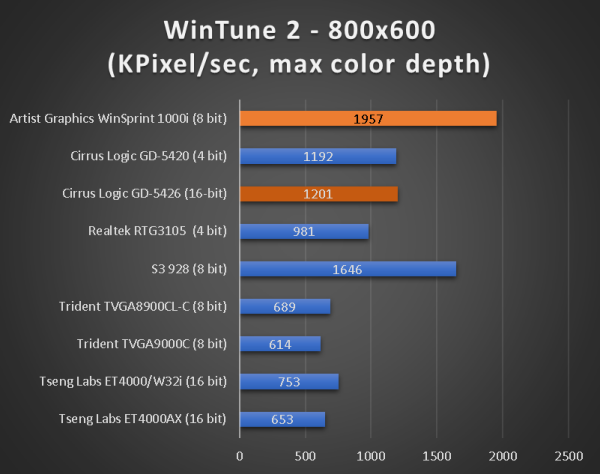
386DX 45MHz
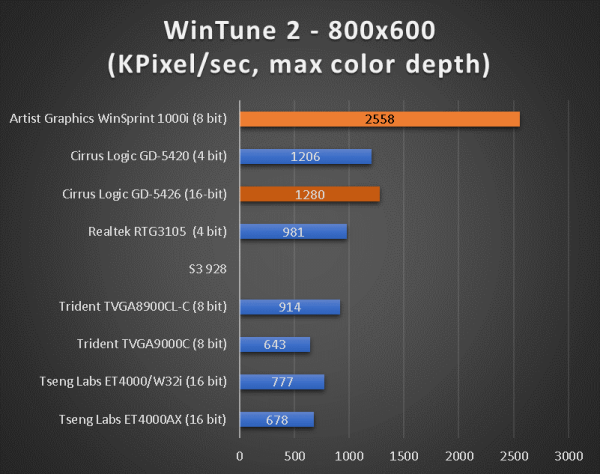
486DX5 160MHz
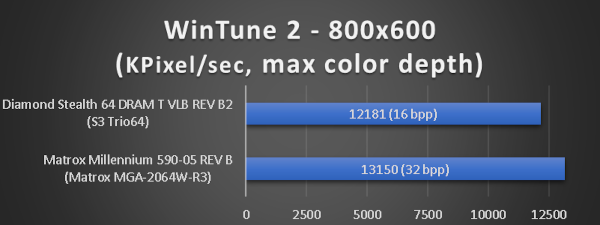
RENDERING
LightWave3D
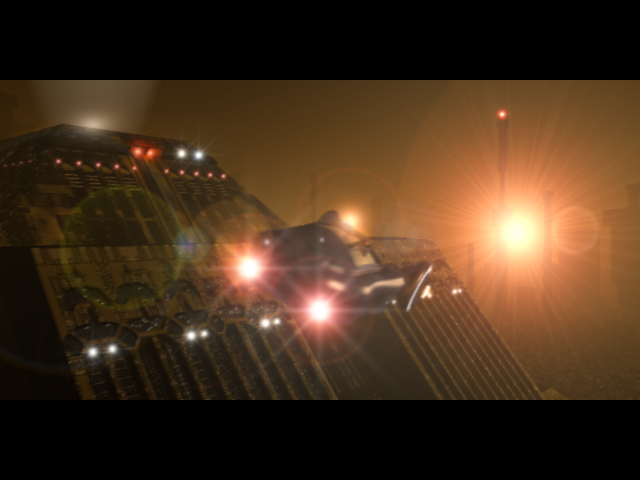

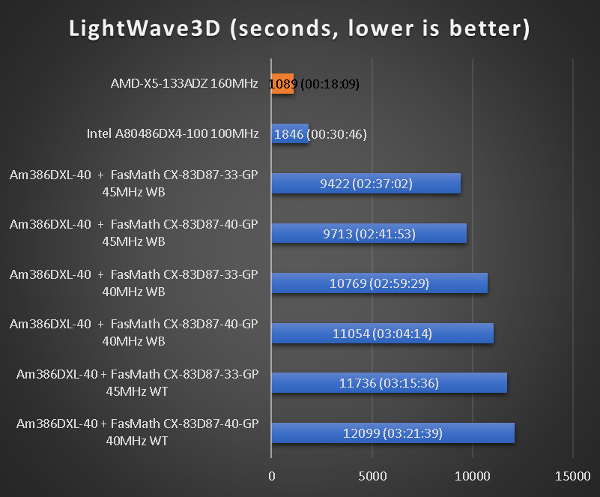
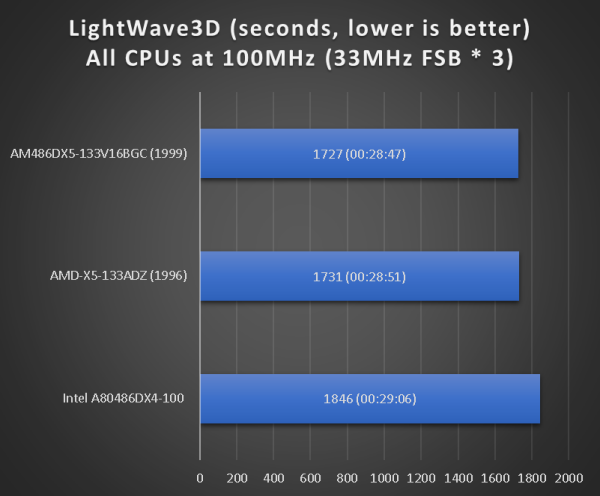
3D Studio
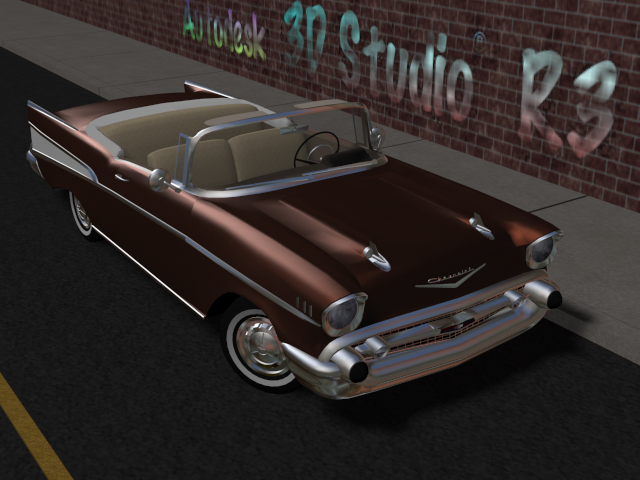
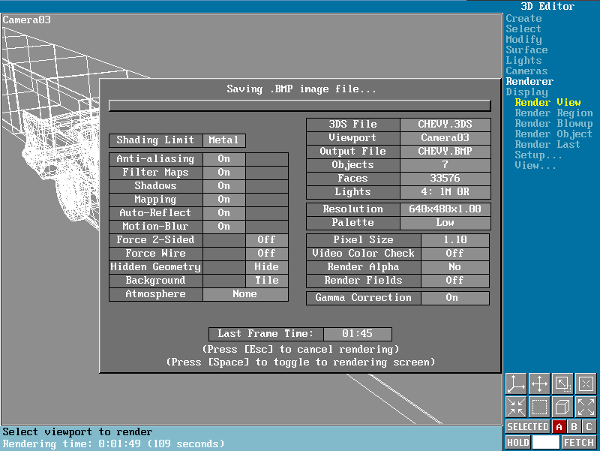
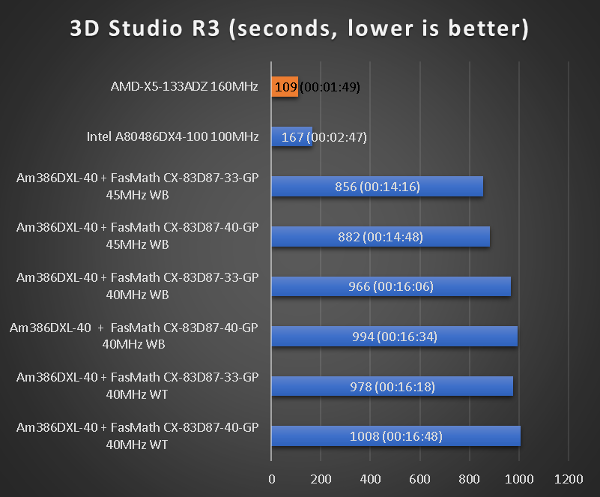
Chaos

